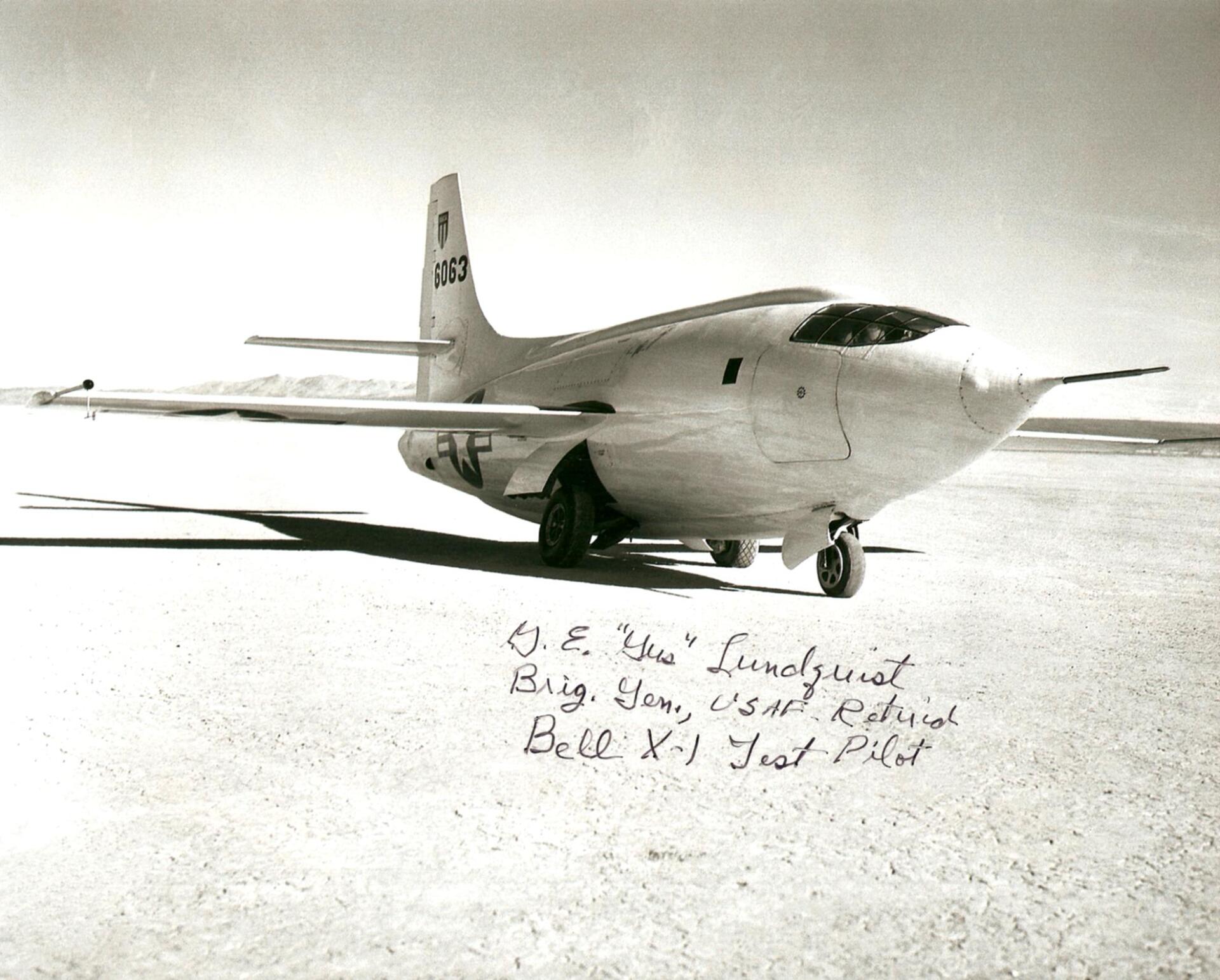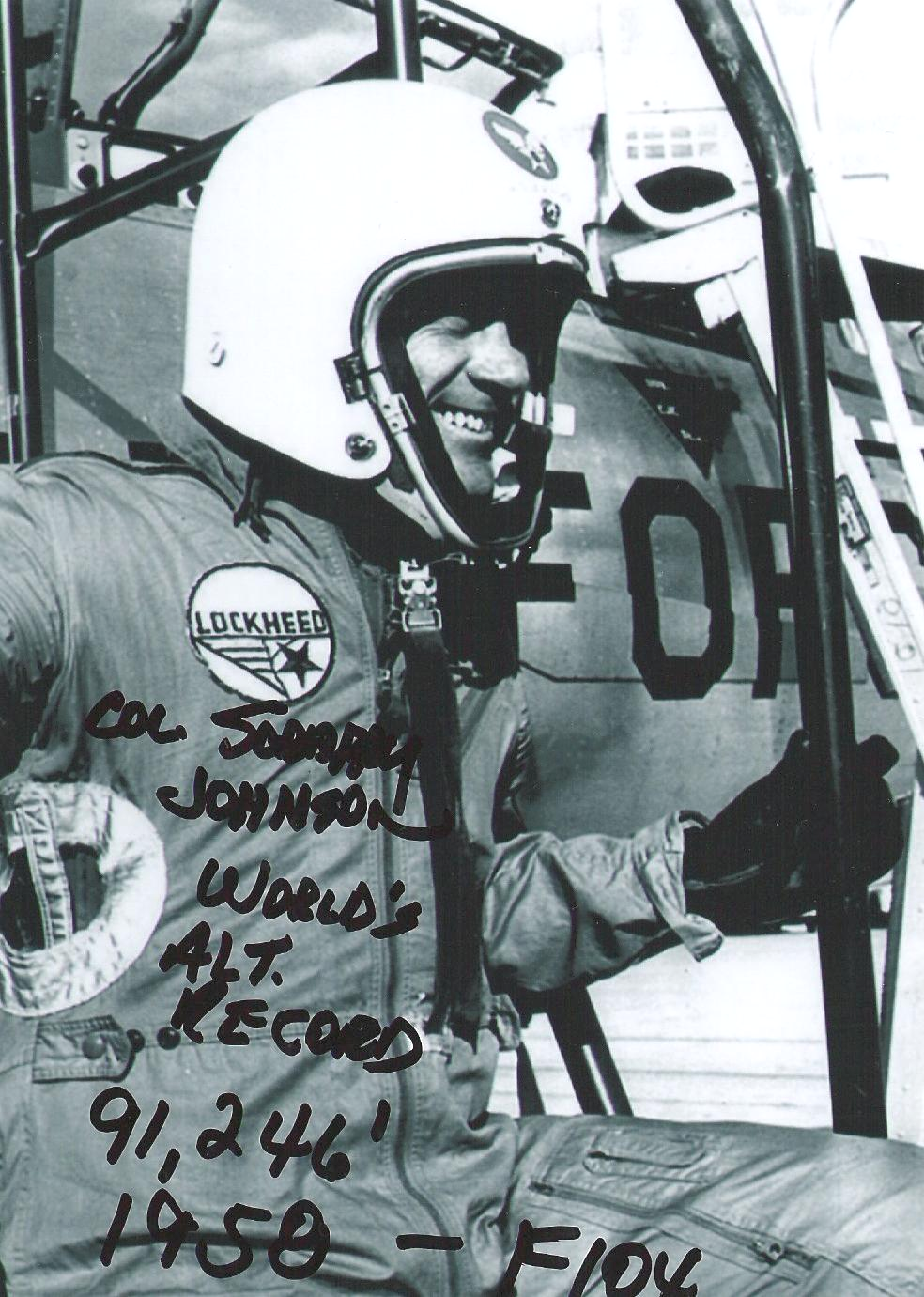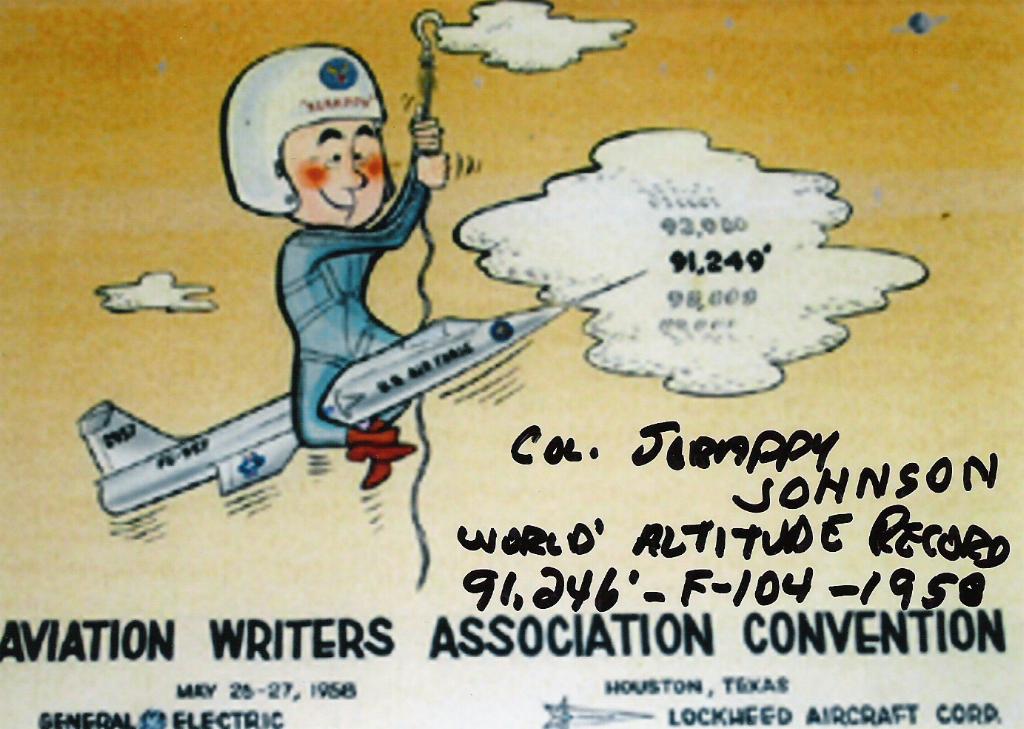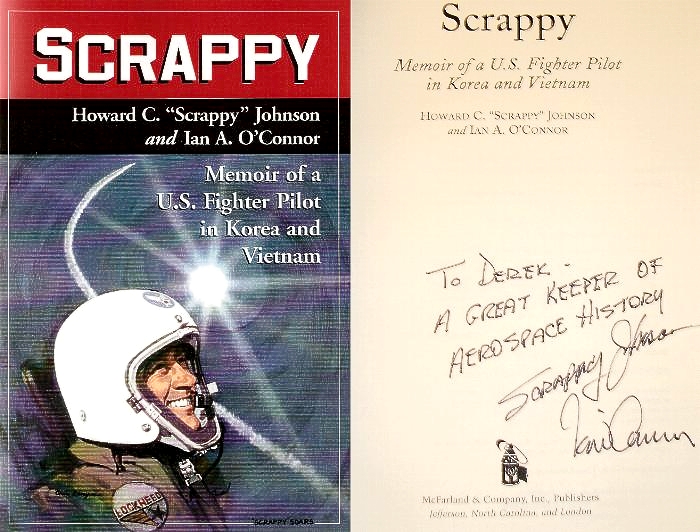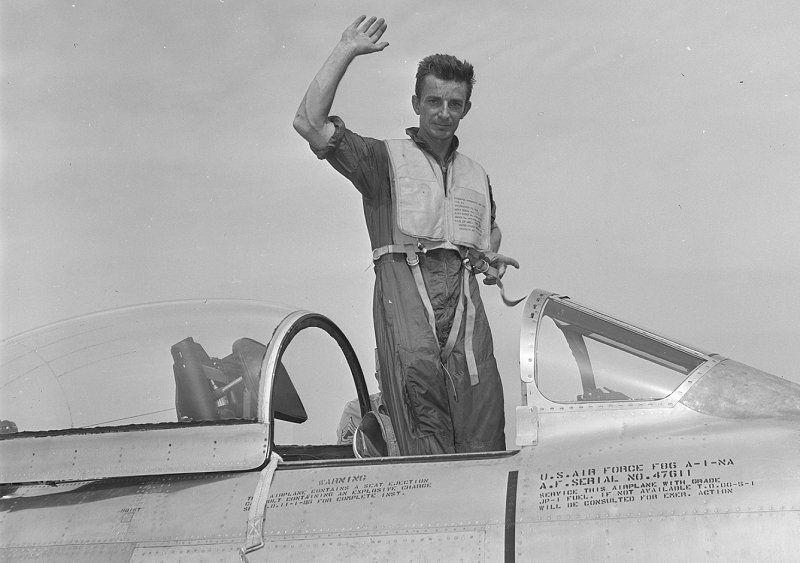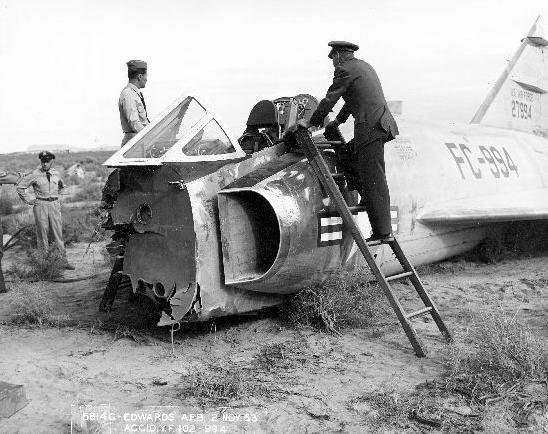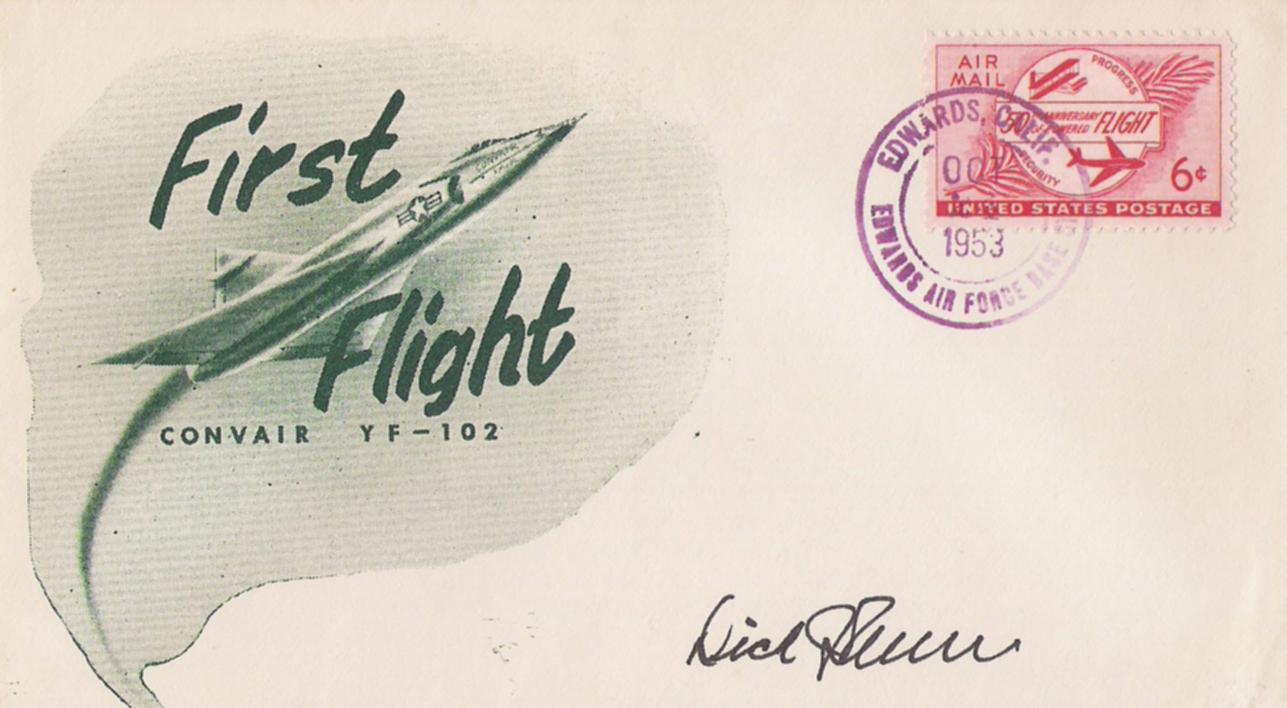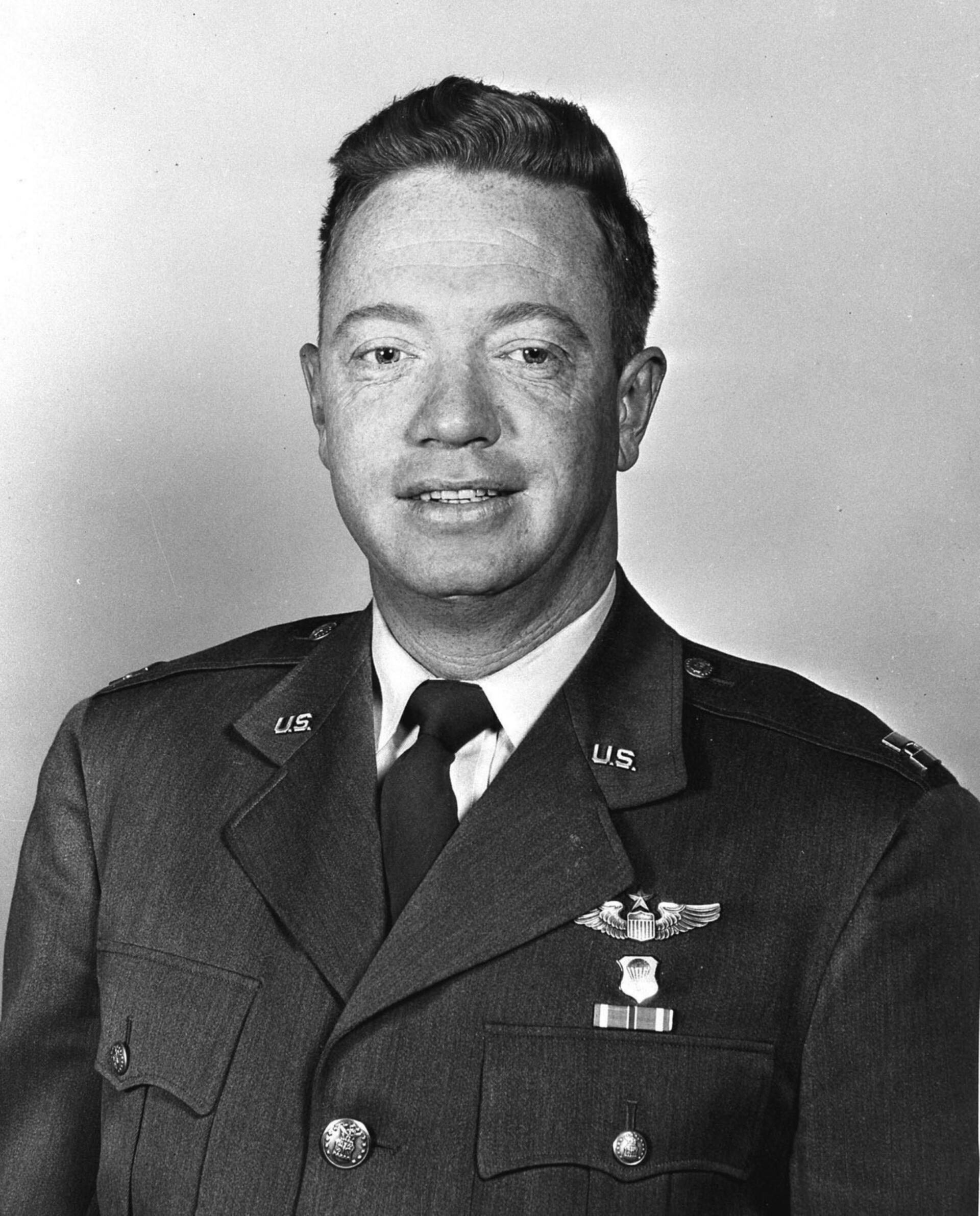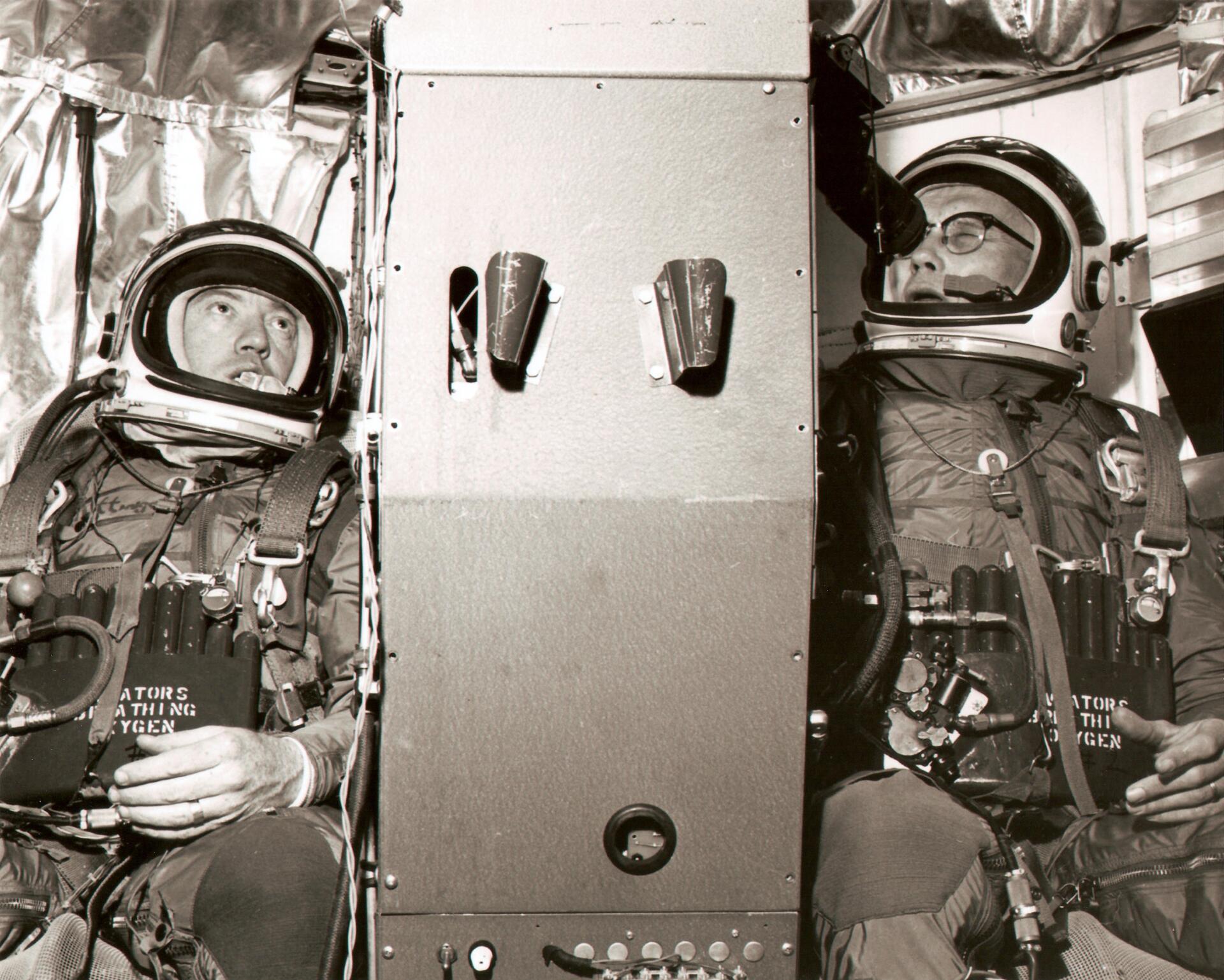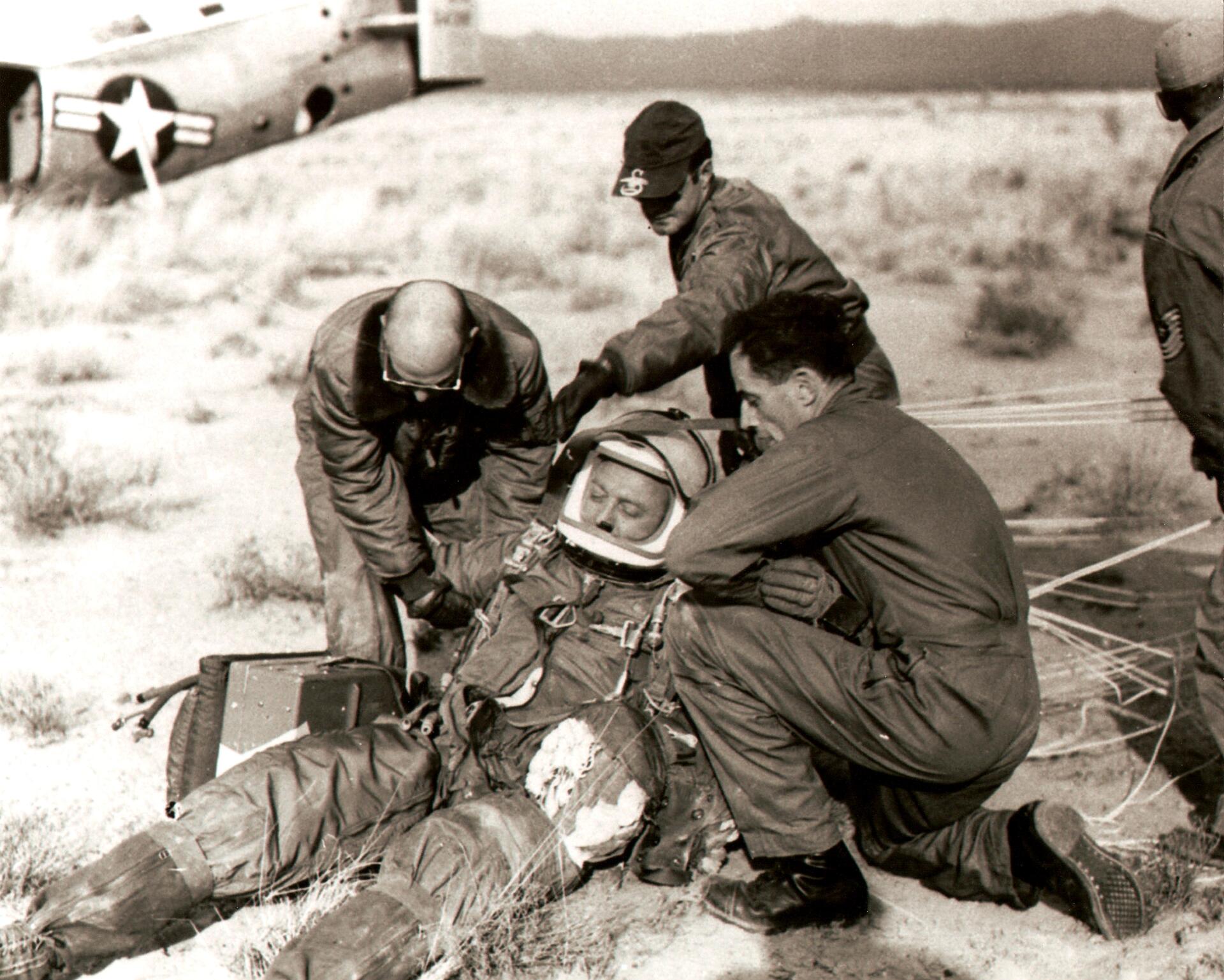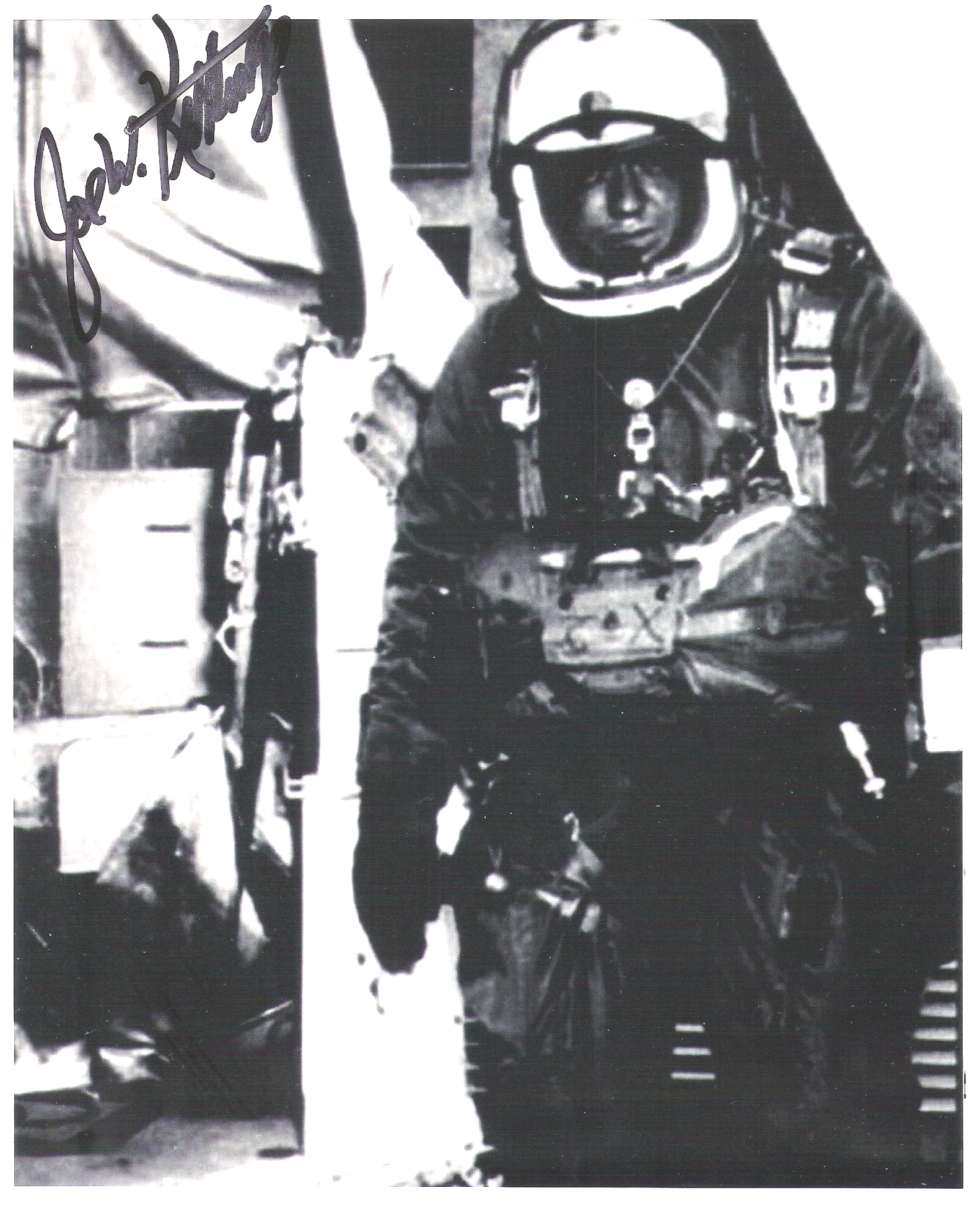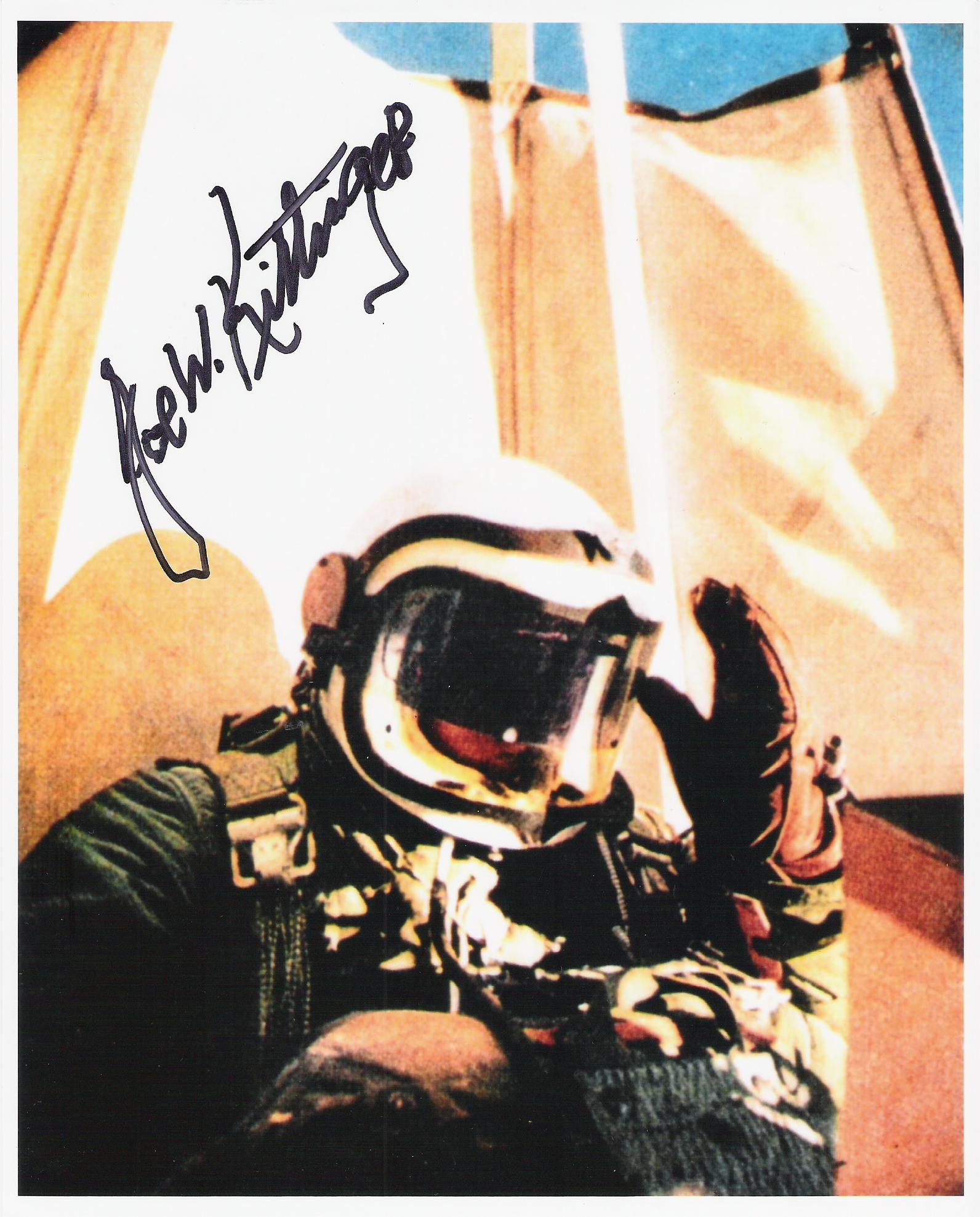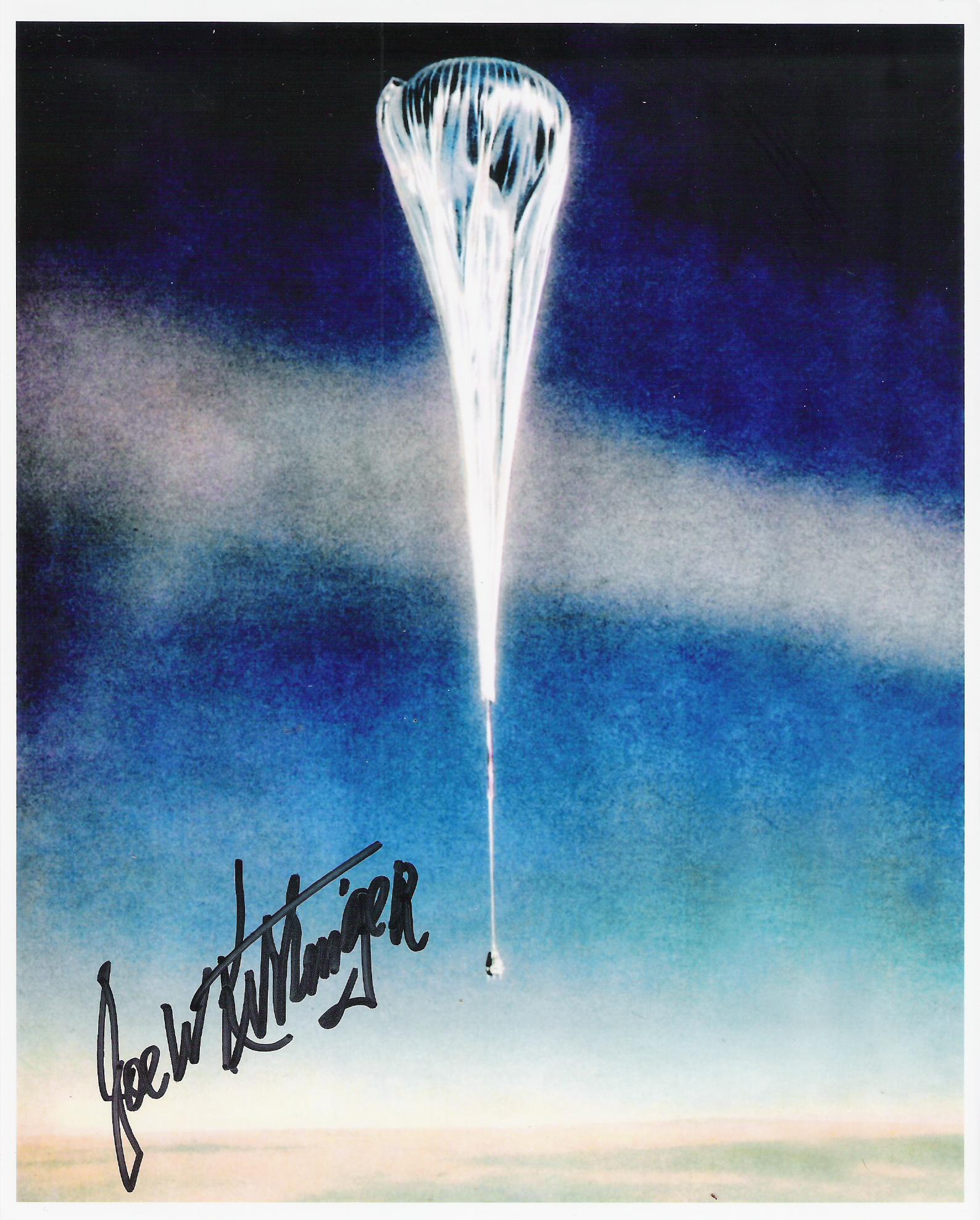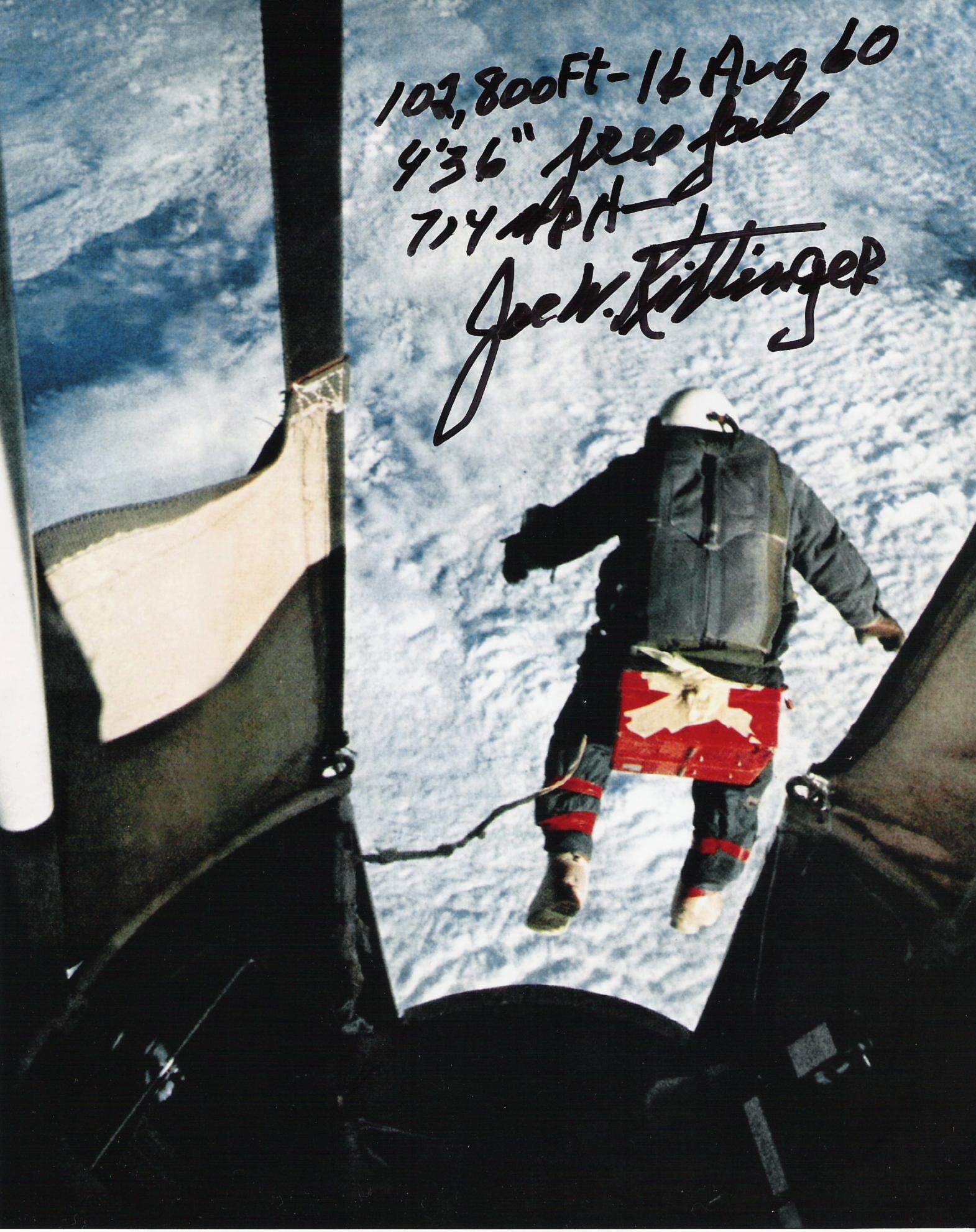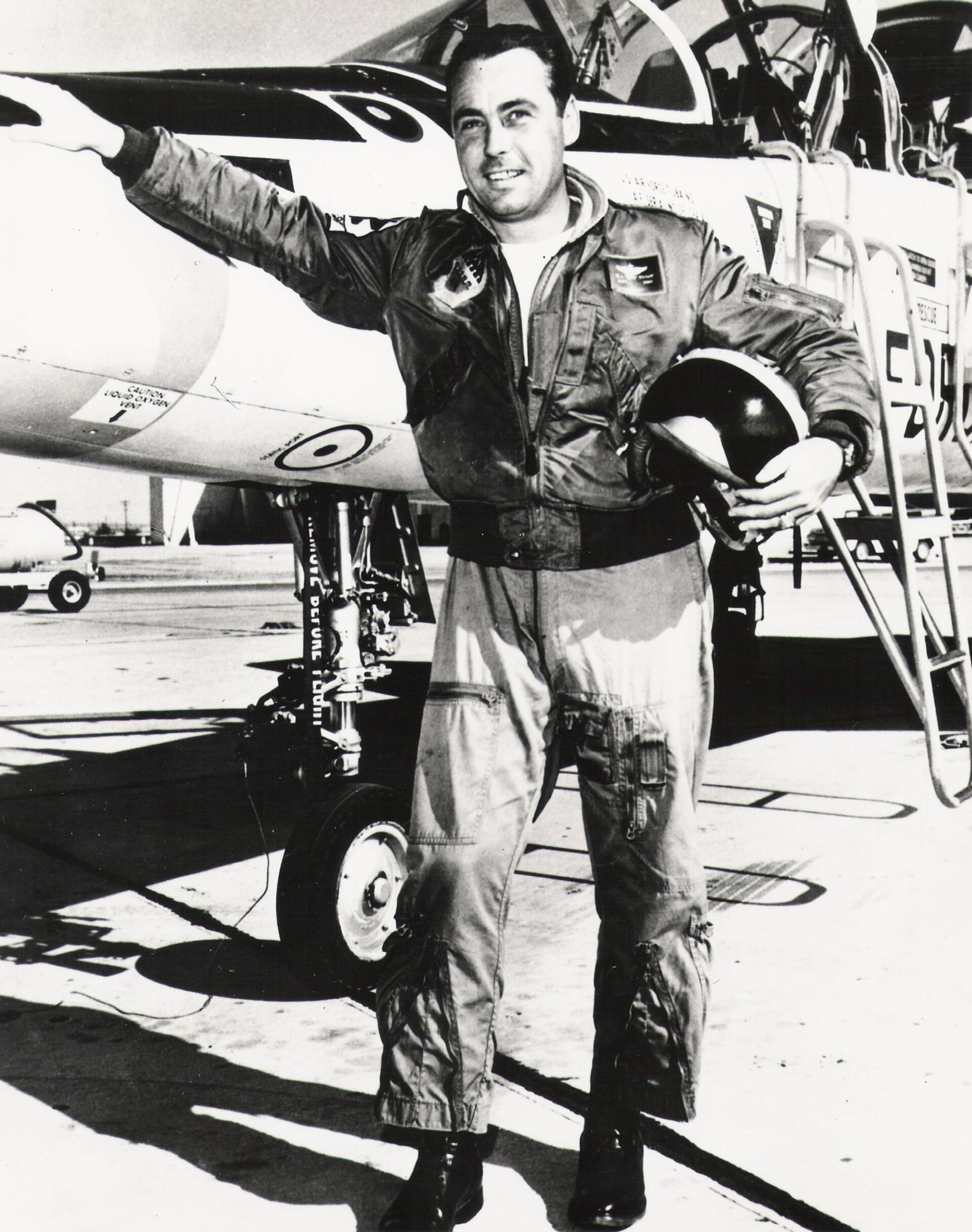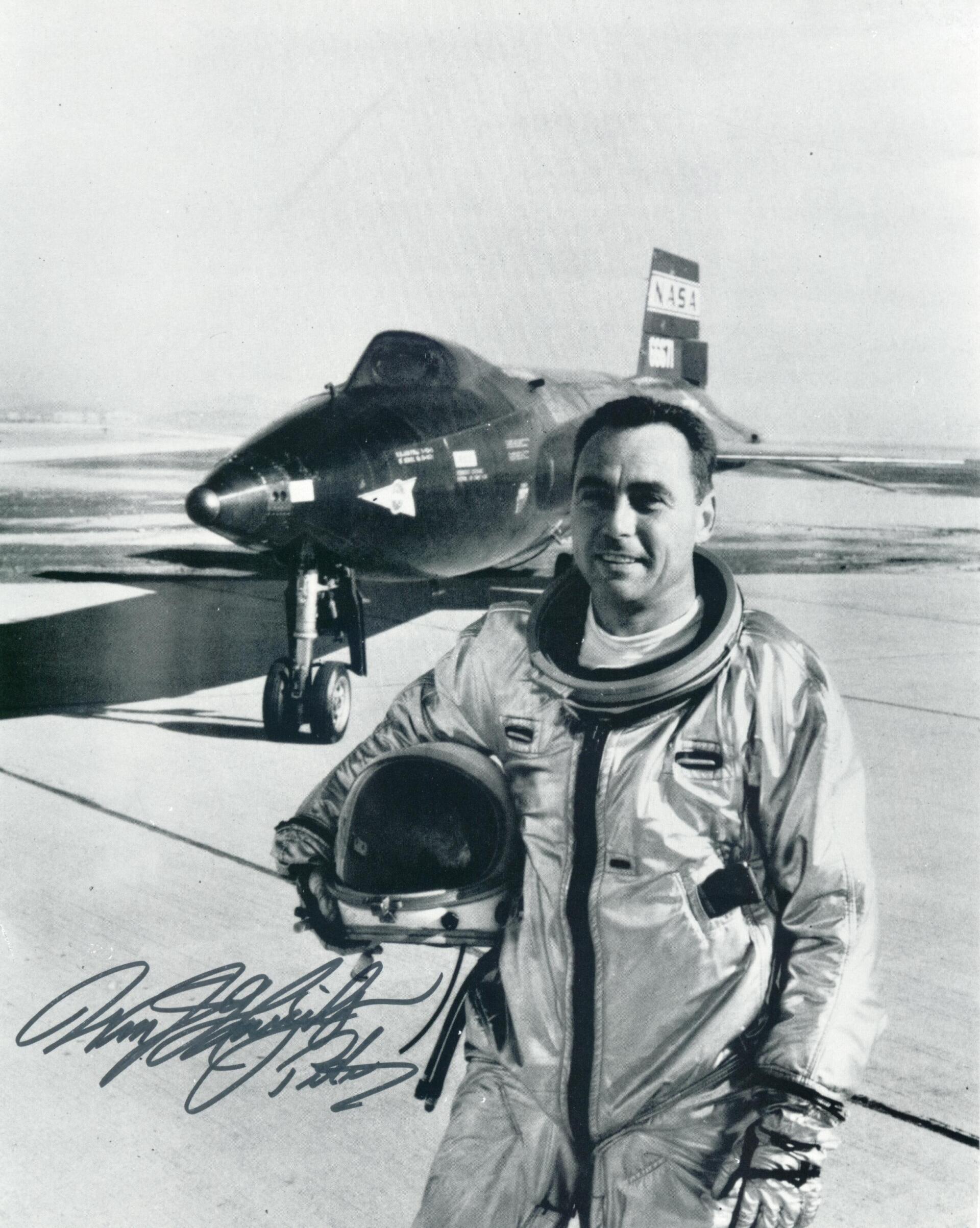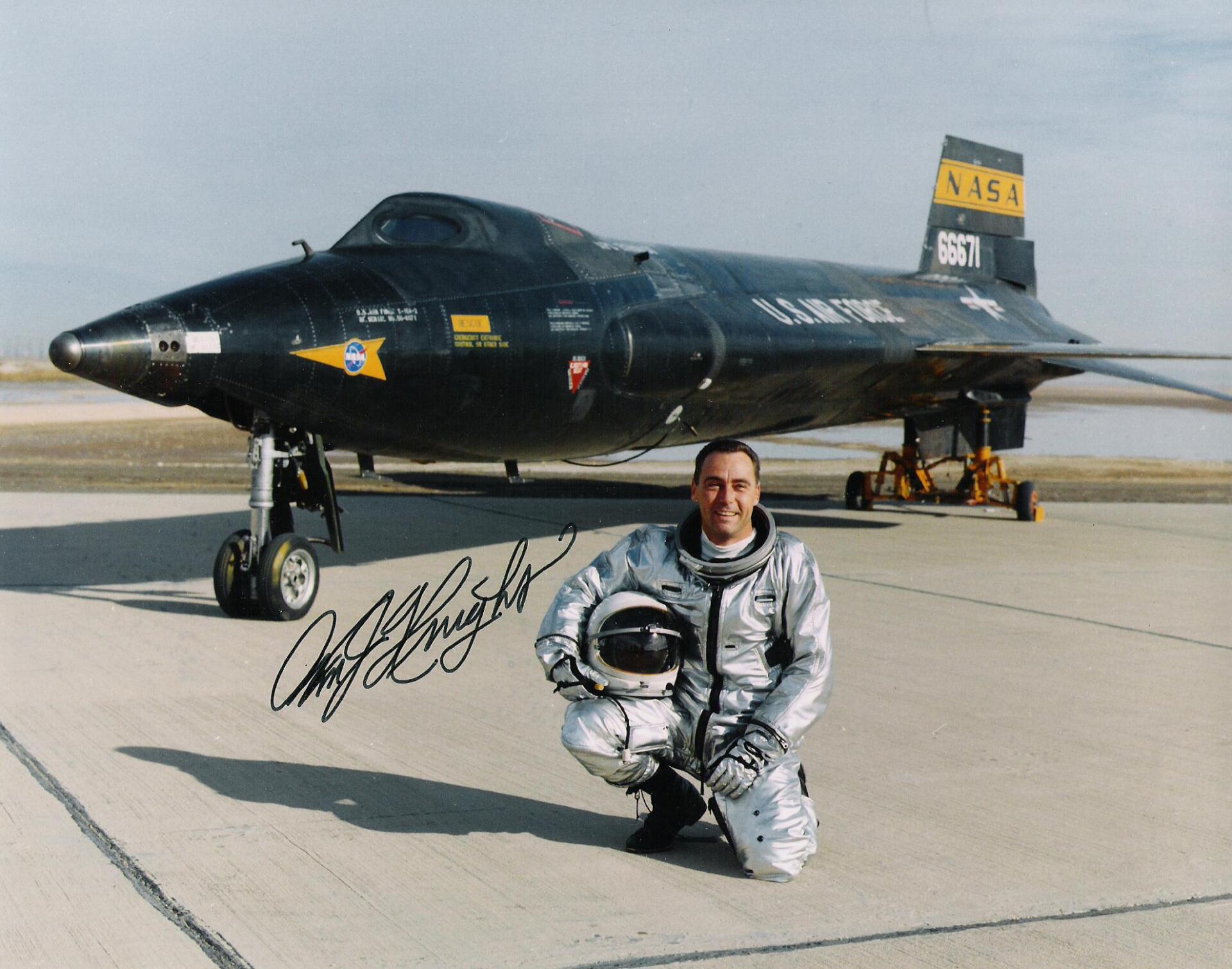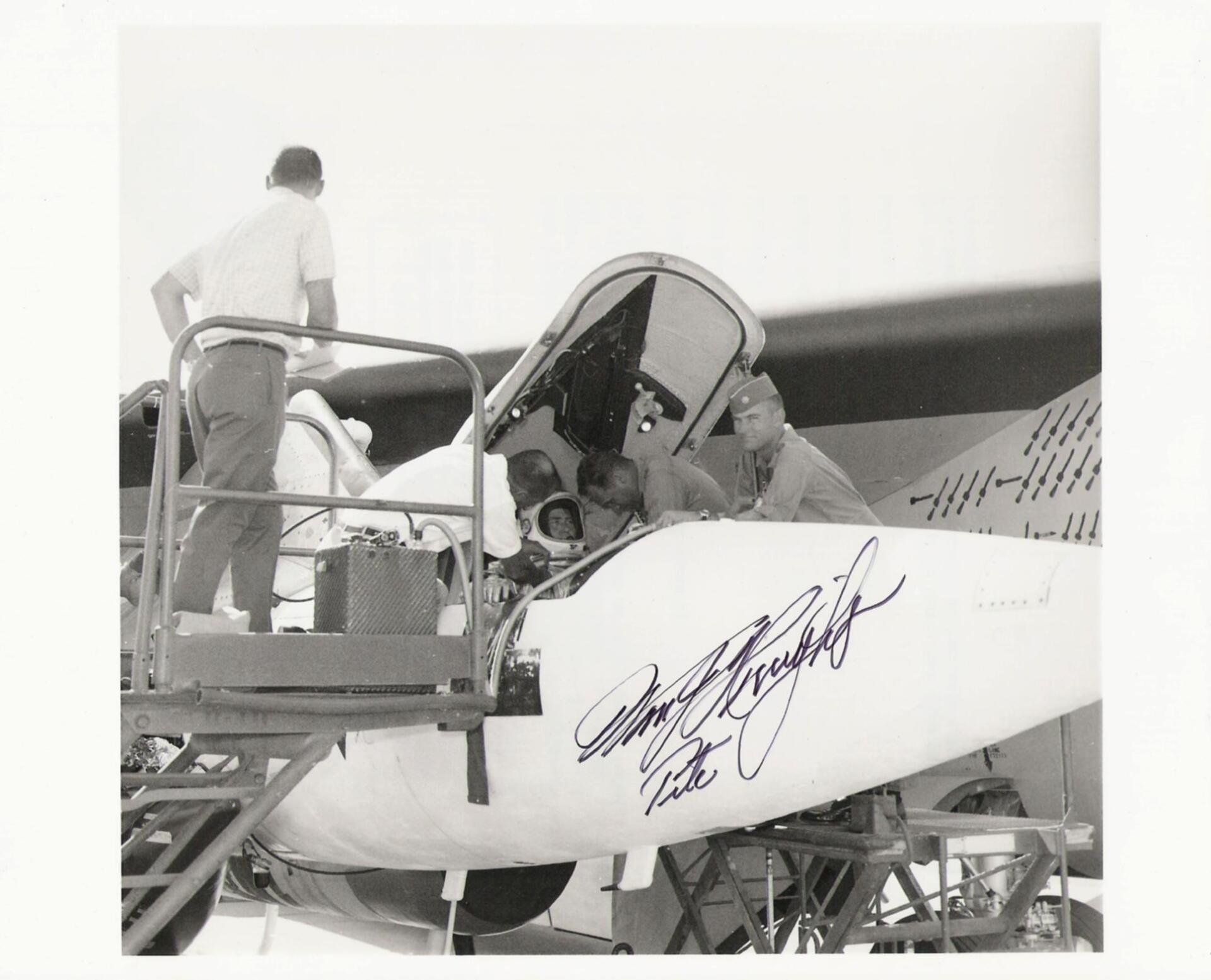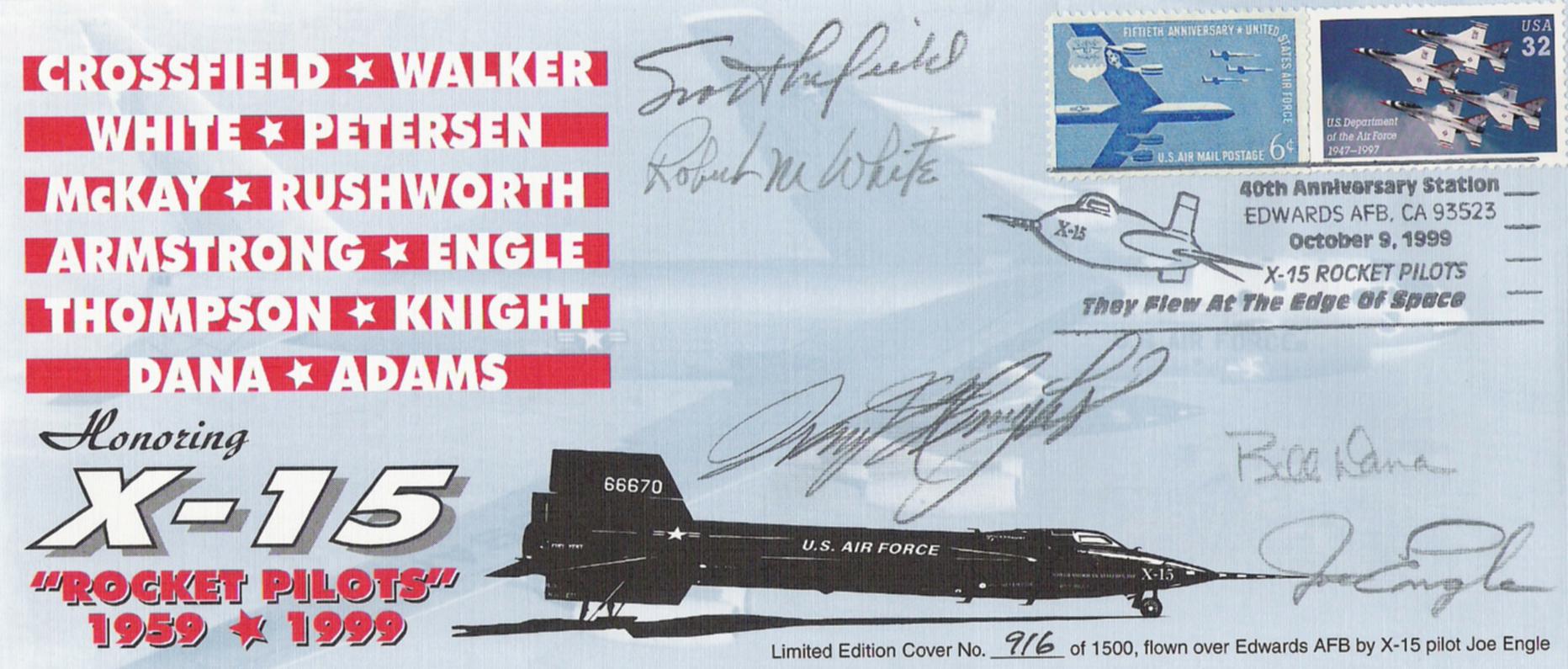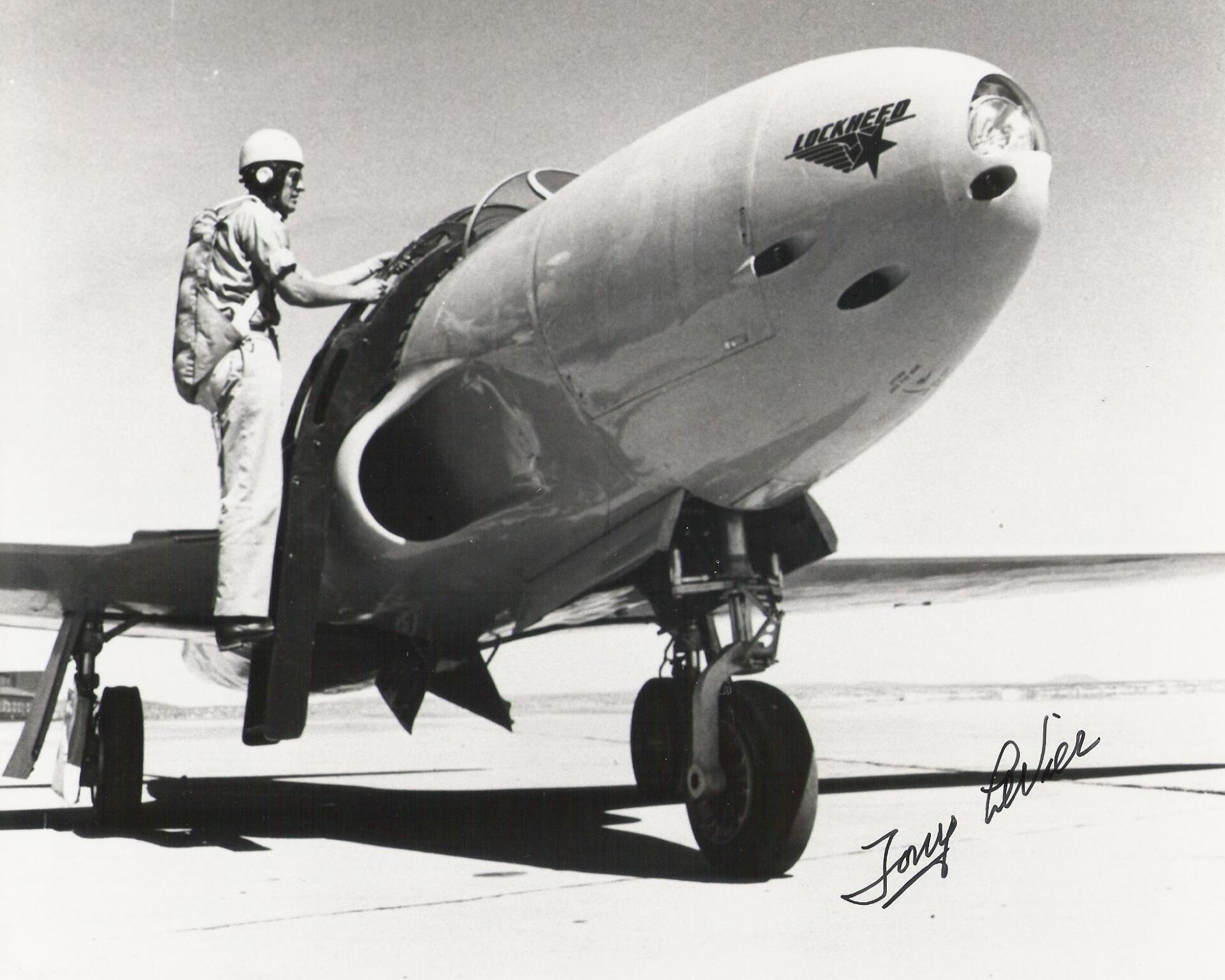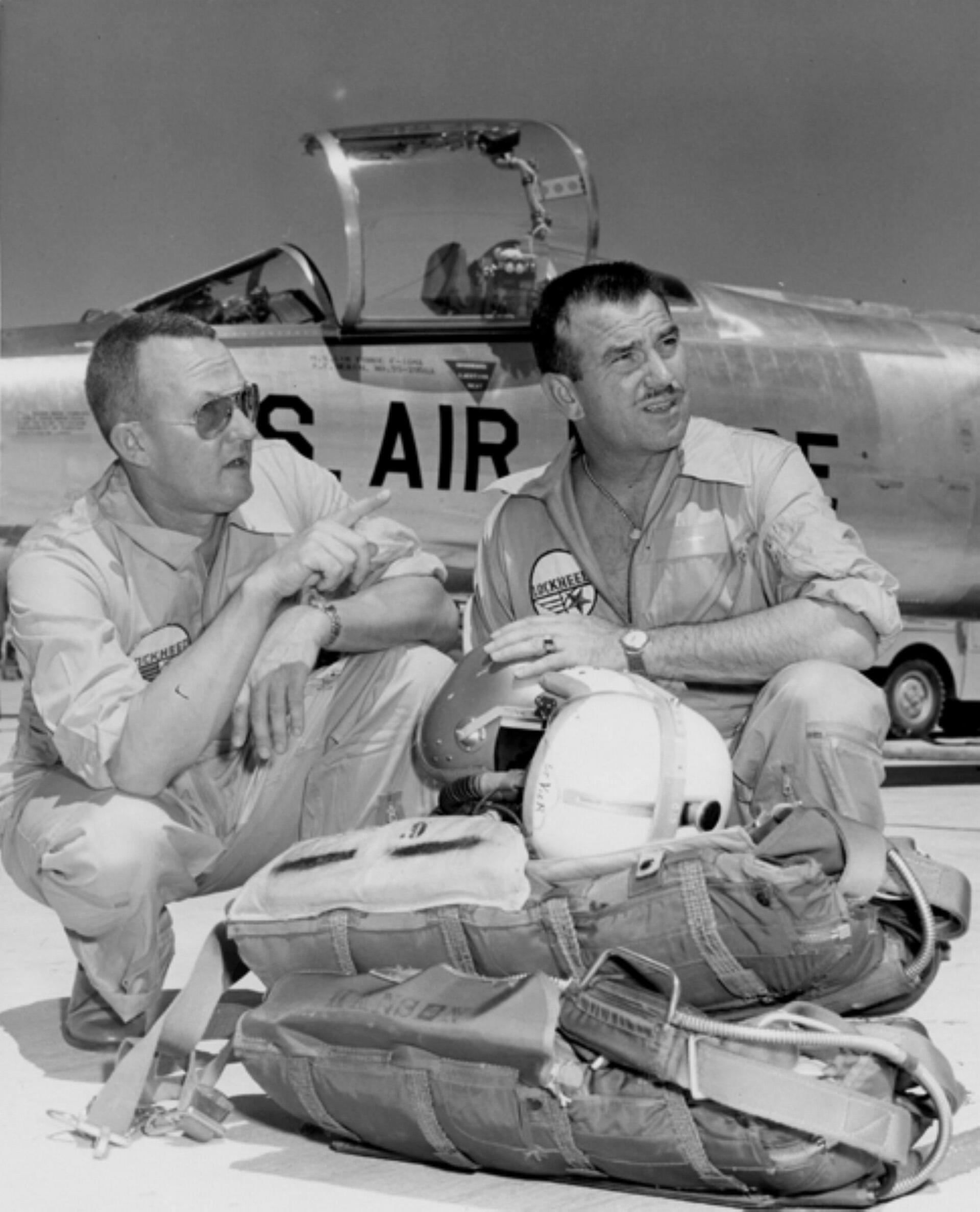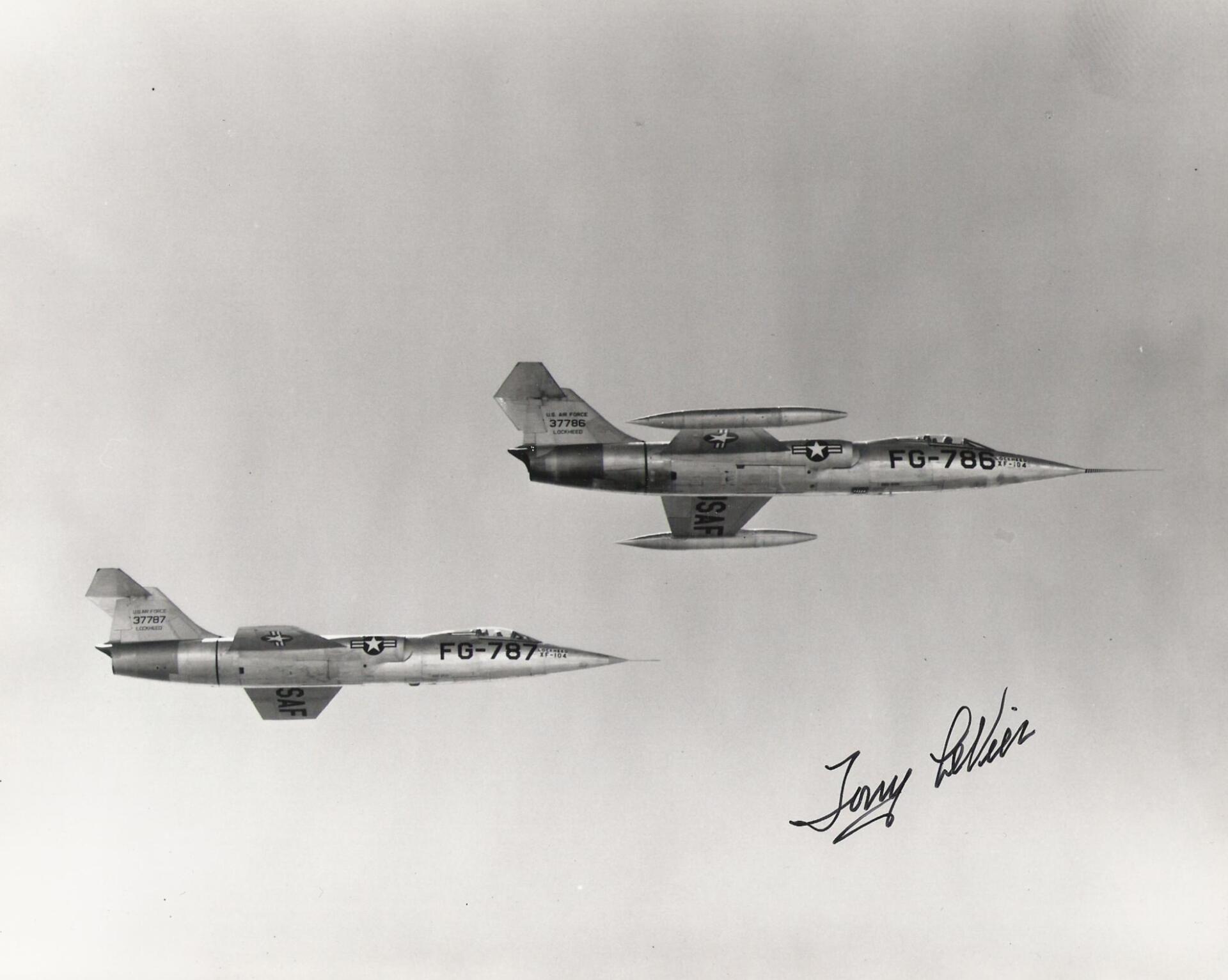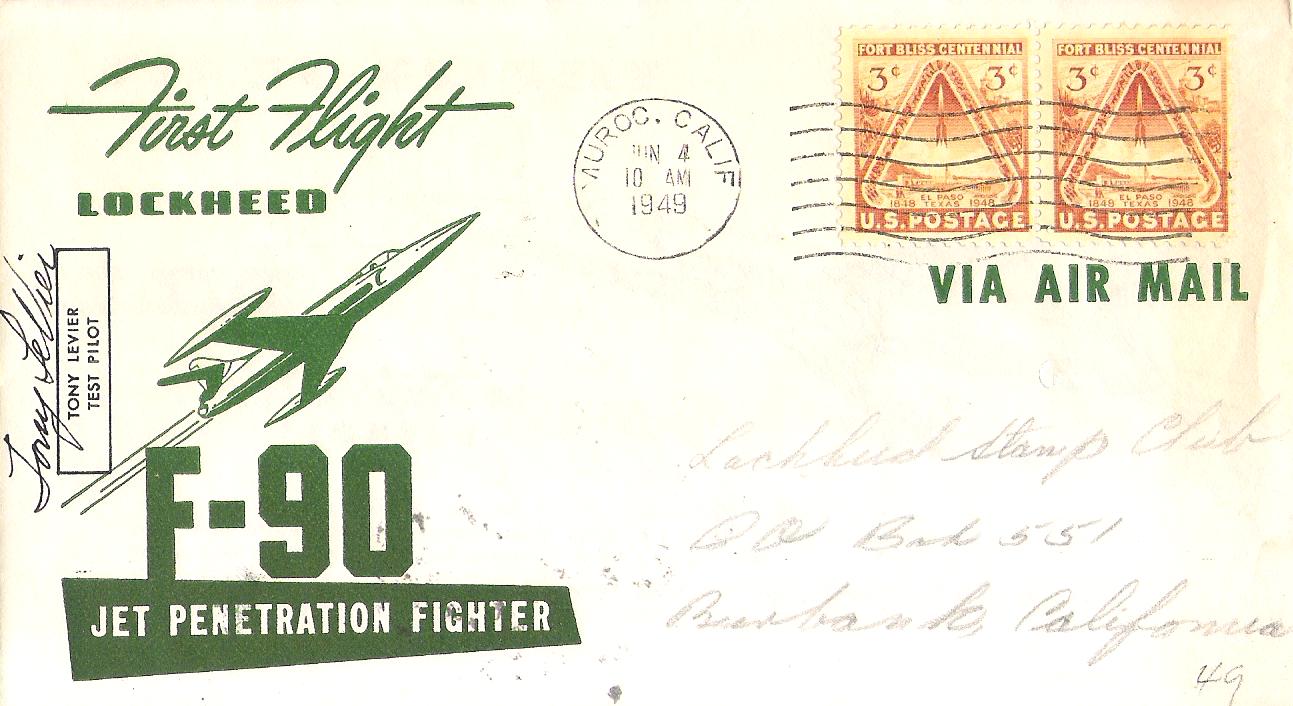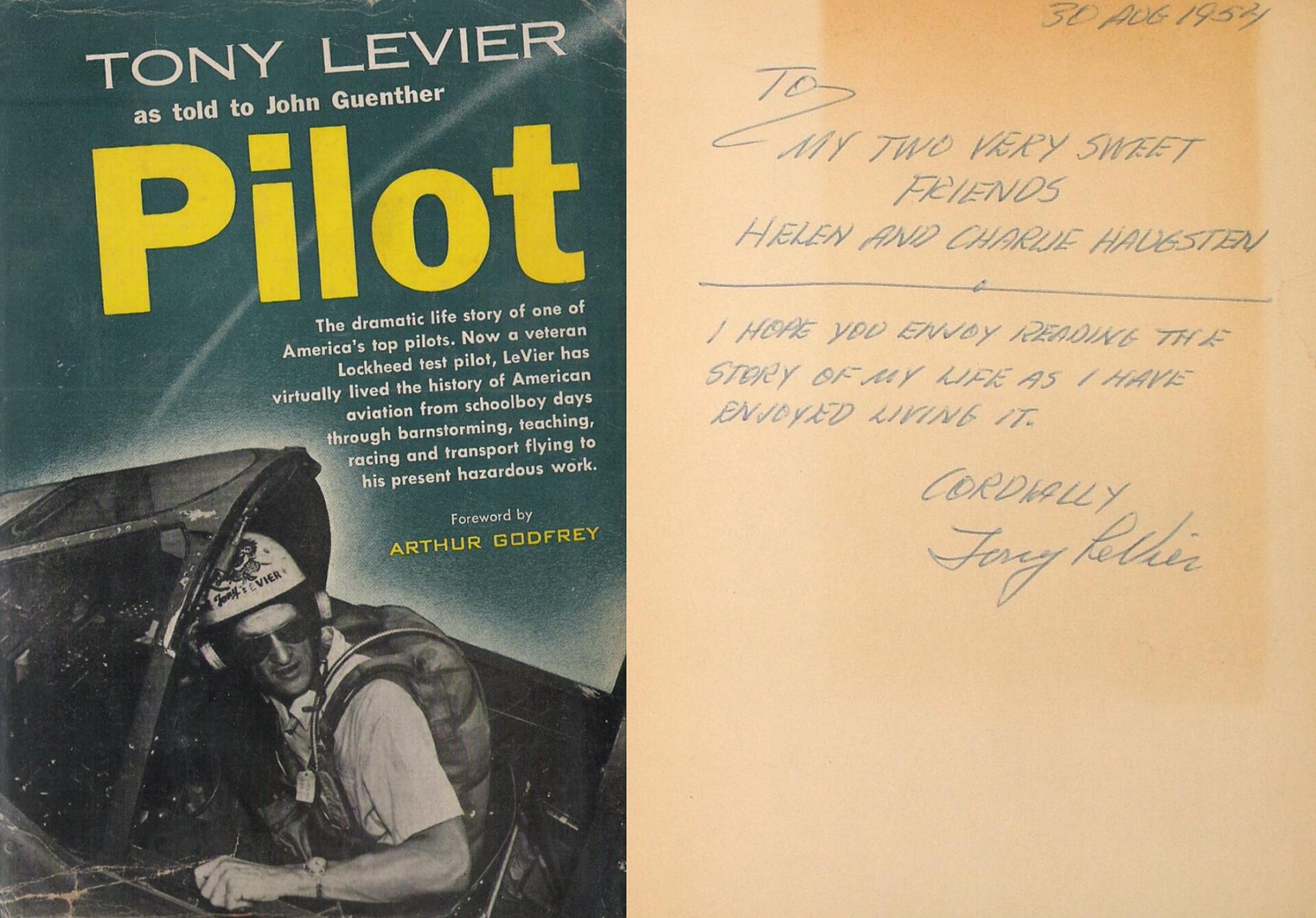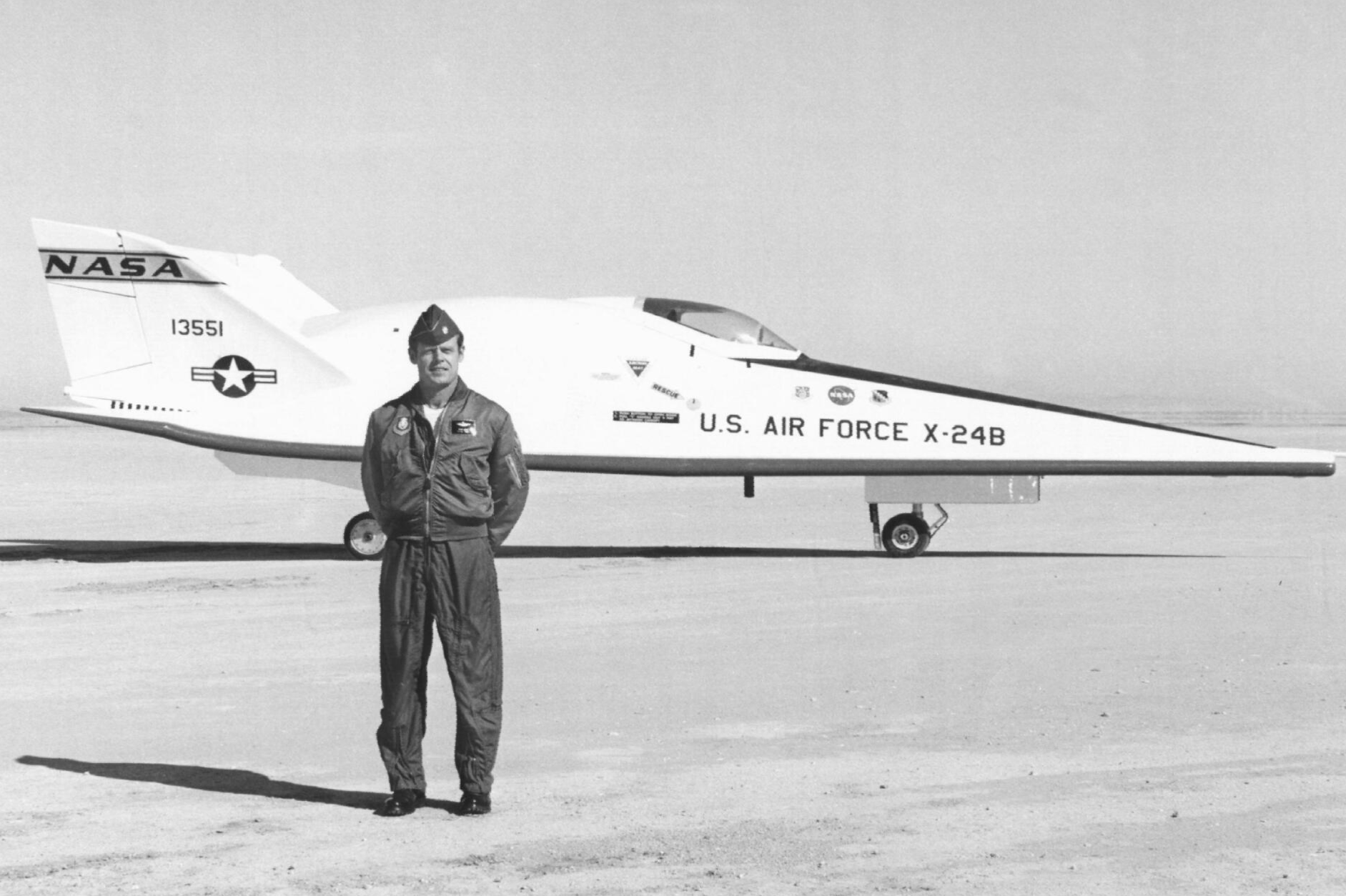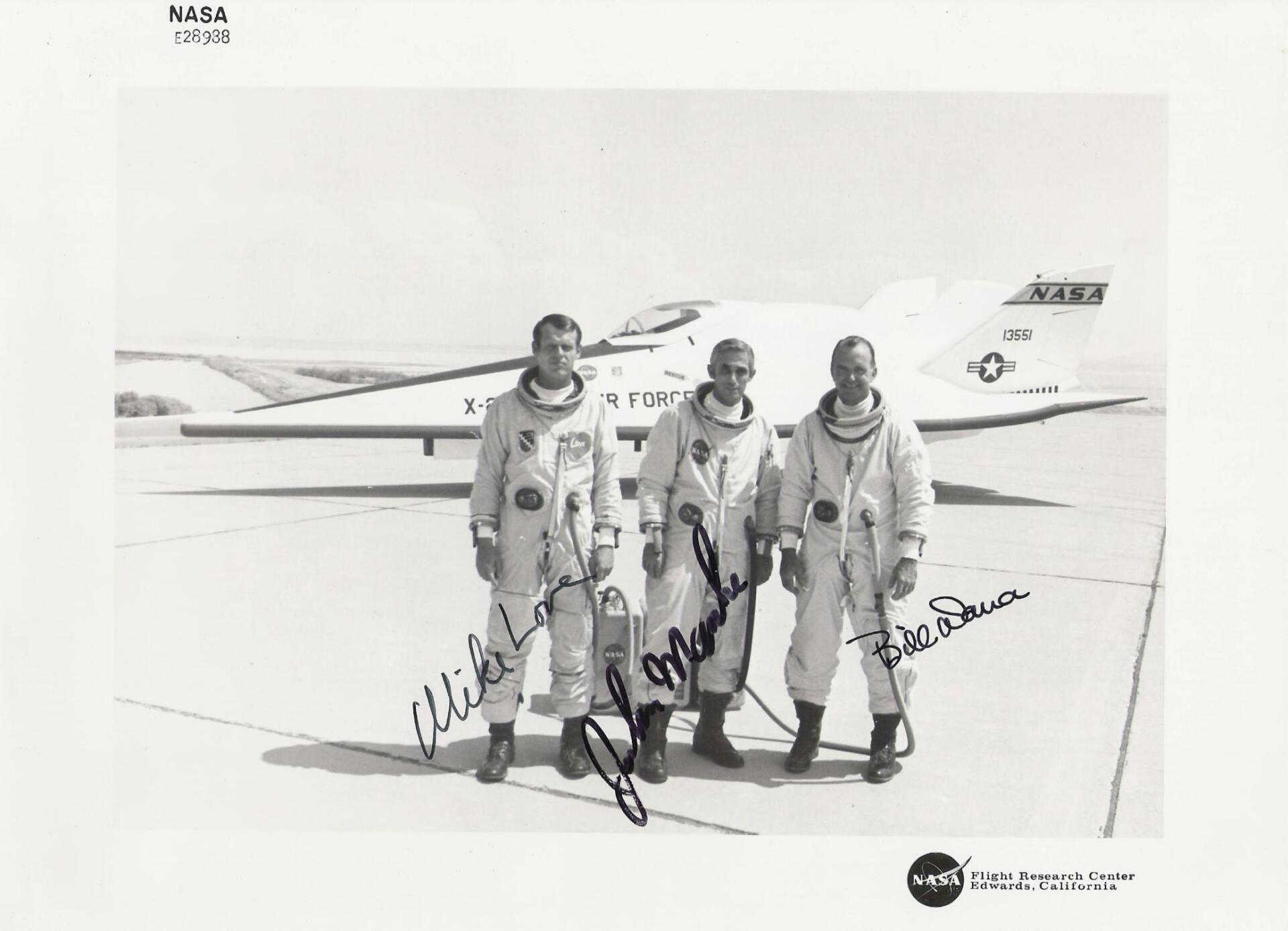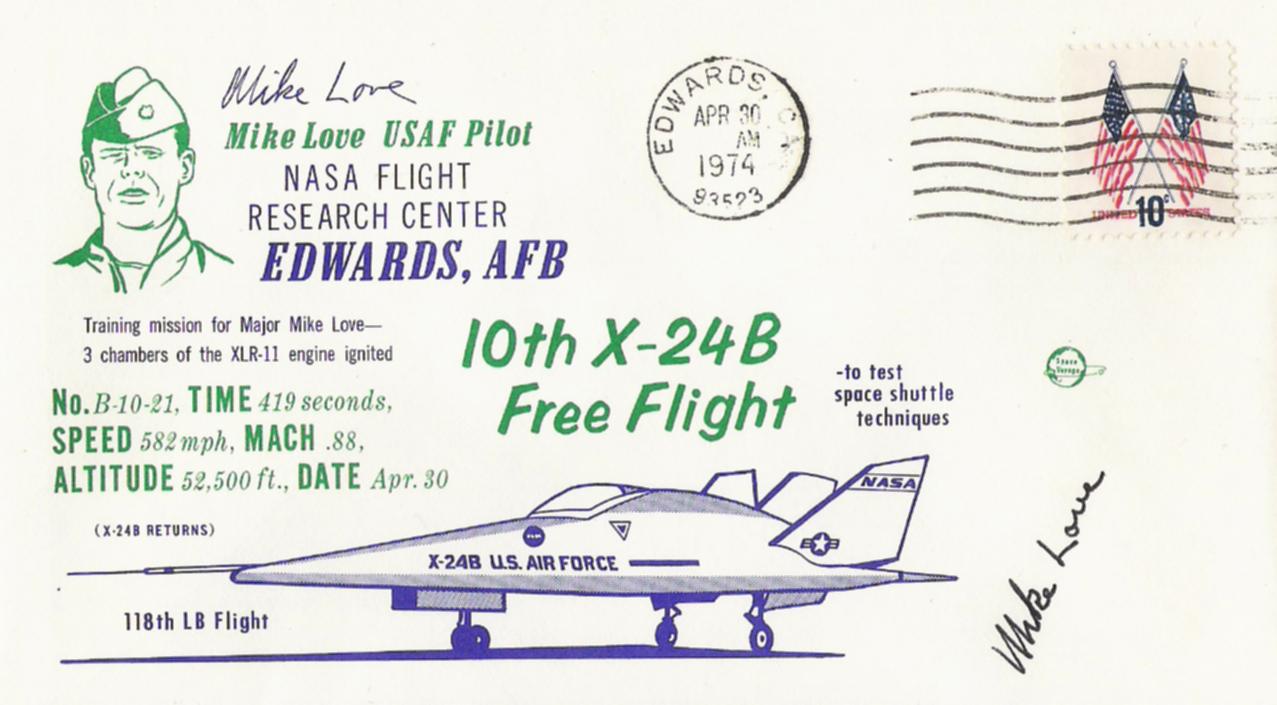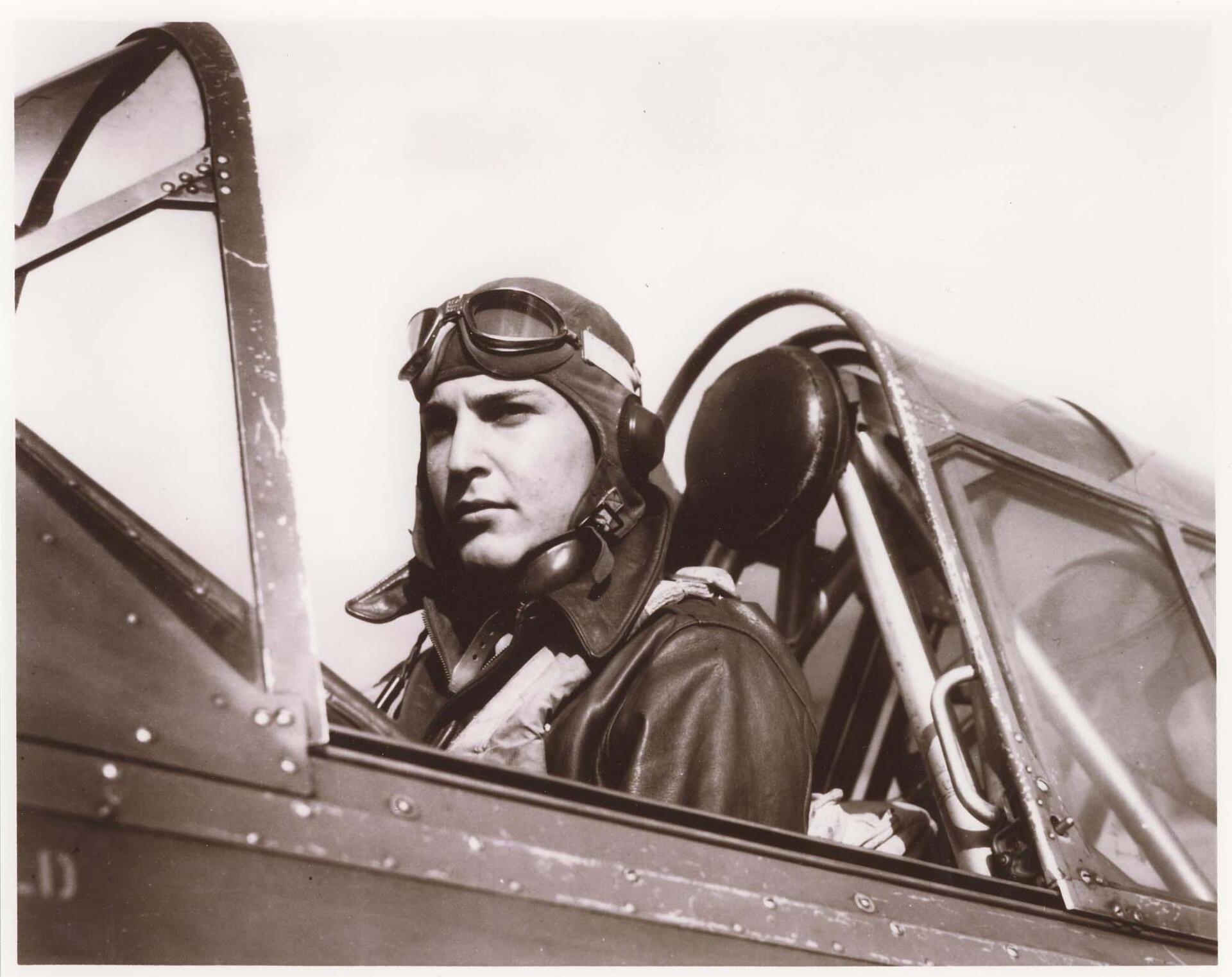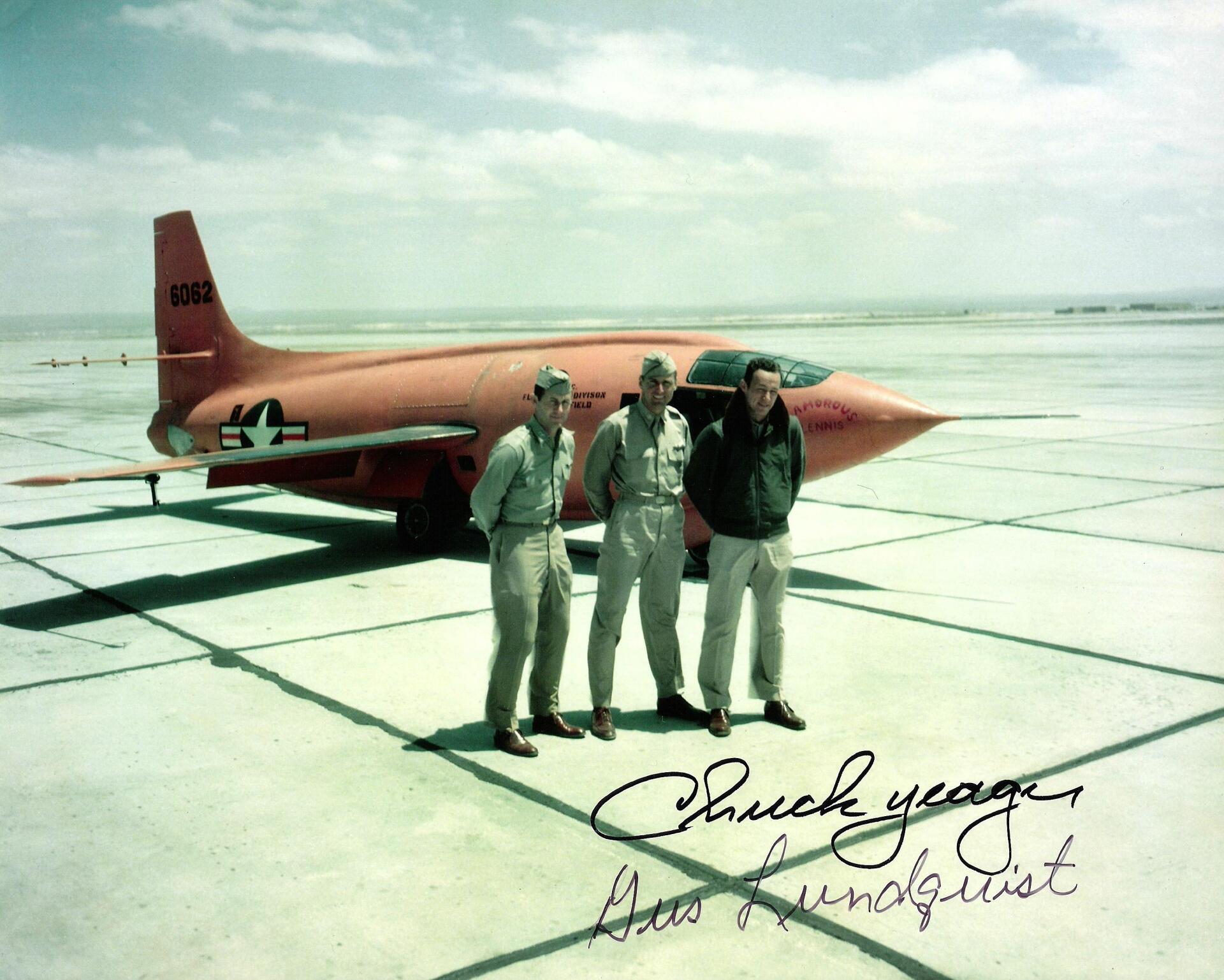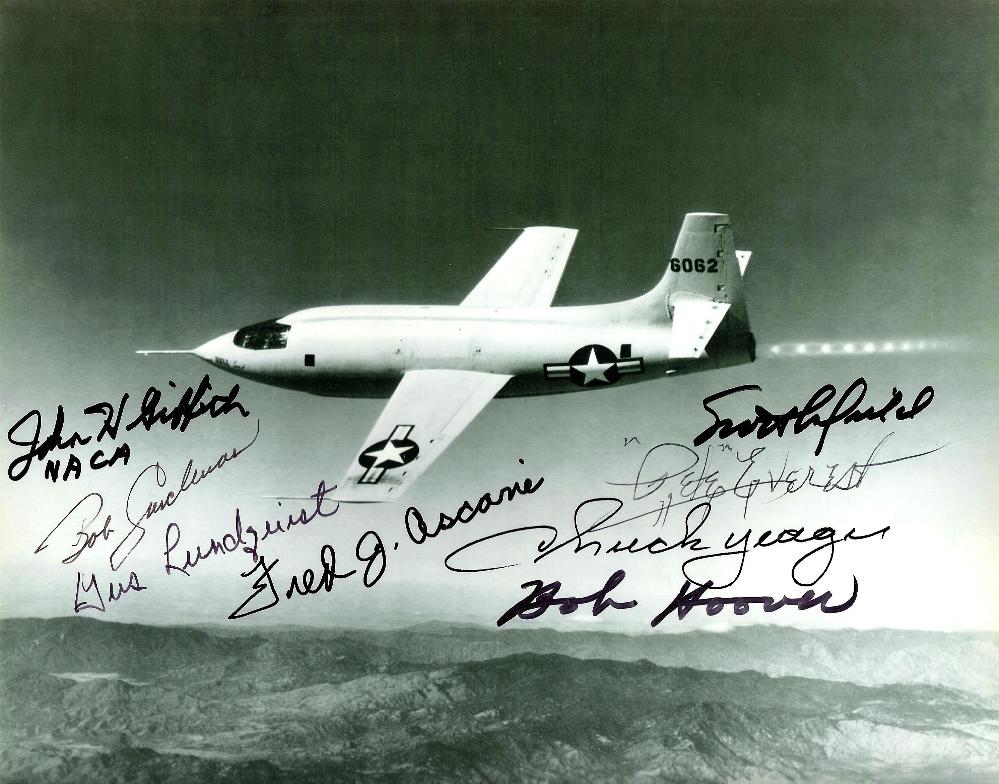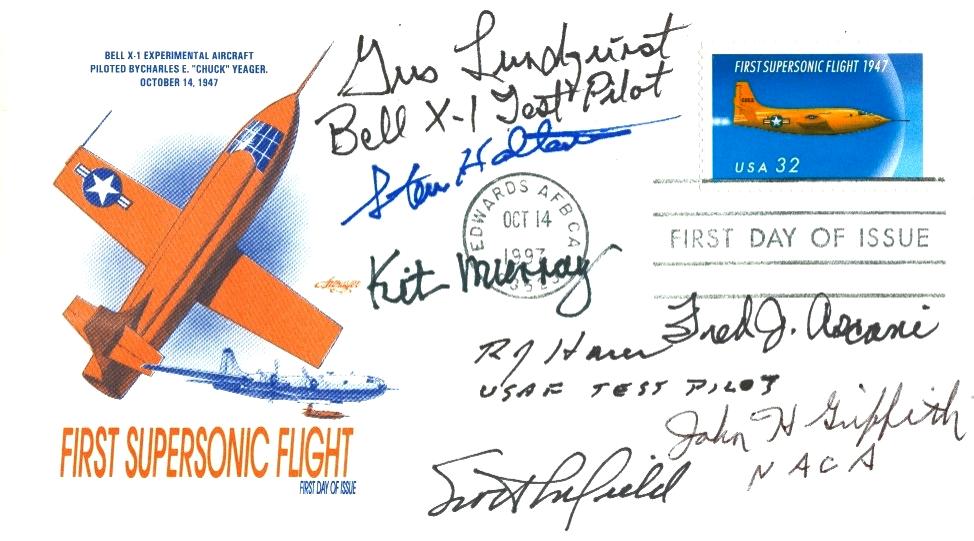Colonel Howard C. "Scrappy" Johnson USAF ret. (1920-2020)
Scrappy Johnson served his country as a pilot in World War II, Korea and Vietnam. He won the 1958 Collier Trophy for breaking the world altitude record in the F-104A at 91,246 ft. In a career that spanned over 30 years, Johnson has flown over 7,000 hours in 15 different fighter planes. In 1967, he was a founder of the Red River Valley Fighter Pilots Association, building a philanthropy that provides scholarships to the dependents of American service personnel missing or killed in action - including those lost at the Pentagon and the World Trade Center on Sept. 11, 2001.
To date, the "Red River Rats" have awarded over $1.4 million. Col. Johnson was presented by acclaimed SR-71 Blackbird test pilot Bob Gilliland, who has logged more experimental supersonic flight test time above Mach 2 and Mach 3 than any other pilot. Col. Johnson accepted his medallion in person. Born in Knoxville, Tenn., Scrappy Johnson was reared and educated in Louisville, Ky., where he got his nickname after he "lit into" another youngster. He attended the University of Louisville and completed his education in the U.S. Air Force. He earned 2 Silver Stars, 18 Air Medals and 7 Distinguished Flying Crosses. He retied with his wife Elena to West Palm Beach, Florida. "Scrappy" Johnson sadly passed away in December 2020, he was 100 years old.
Richard L. "Dick" Johnson - (1917-2002)
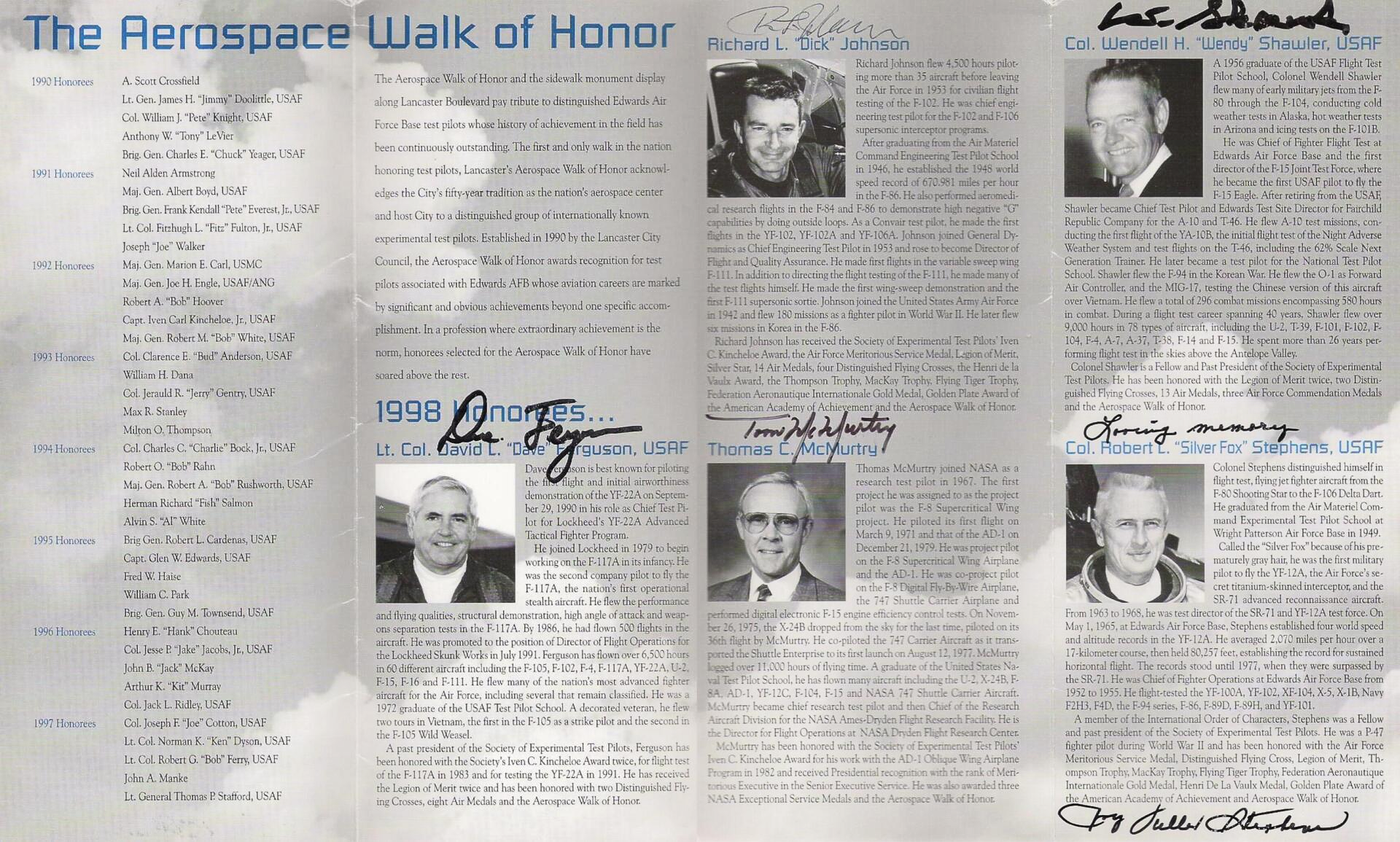
Above is the 1998 Aerospace Walk of Honor Program signed by the 5 Honorees'
Richard Johnson flew 4,500 hours piloting more than 35 aircraft before leaving the Air Force in 1953 for civilian flight testing of the F-102. He was chief engineering test pilot for Convair on the F-102 and F-106 supersonic interceptor programs. After graduating from the Air Materiel Command Engineering Test Pilot School in 1946, he established the 1948 world speed record of 670.981 miles per hour in the F-86 at Muroc. He also performed aeromedical research flights in the F-84 and F-86 to demonstrate high negative "G" capabilities by doing outside loops. As a Convair test pilot, he made the first flights in the YF-102, YF-102A and YF-106A. Johnson joined General Dynamics as Chief Engineering Test Pilot in 1953 and rose to become Director of Flight and Quality Assurance.
On 2 November 1953, the Convair YF-102 prototype, 52-7994 was severely damaged when its Pratt & Whitney J57-P-11 engine flamed out during a test flight. The cause was traced to the engine’s Bendix fuel control. Dick Johnson was unable to restart the engine and was forced to make a gear-up landing in the desert, not far from Edwards Air Force Base. Johnson was seriously injured. The prototype was written off.
He made first flights in the variable sweep wing F-111. In addition to directing the flight testing of the F-111, he made many of the test flight himself. he made the first wing-sweep demonstration and the first F-111 supersonic sortie. Johnson joined the United States army Air Force in 1942 and flew 180 missions as a fighter pilot in World War II. He later flew six missions in Korea in the F-86.
Richard Johnson was a founding member of the Society of Experimental Test Pilots' and was honored with the SETP's prestigious Iven C. Kincheloe Award in 1967 for his work on the General Dynamics F-111 program. Mr Johnson's other awards include; the Air Force Meritorious Service Medal, Legion of Merit, Silver Star, 14 Air Medals, four Distinguished Flying Crosses, the Henri de la Vaulx Award, the Thompson Trophy, MacKay Trophy, Flying Tiger Trophy, Federation Aeronautique Internationale Gold Medal and Golden Plate Award of the American Academy of Achievement and the City of Lancaster's Aerospace Walk of Honor in 1998. Mr Johnson sadly passed away in November 2002.
Colonel Joseph W. Kittinger (USAF ret.)
During Colonel Kittinger's military career in the USAF (1949-1978) he held a variety of assignments from Fighter Pilot to Experimental Test Pilot, to staff assignments to Squadron Commander of an F-4 squadron to Vice Commander of an F-4 Fighter Wing. On 1 May 1972, during his third combat tour, he was shot down in an F-4 in aerial combat near Hanoi and was a POW there until released in March 1973.
Colonel Kittinger is perhaps best known for the world records he has set in a hot-air balloon; Highest Parachute Jump - 102,800 ft. 16 Aug 1960, Longest Parachute Freefall - 4 min. 36 sec. 16 Aug 1960, First man to exceed the Speed of Sound without an aircraft or space vehicle. (714 mph during freefall) 16 Aug 1960, Most High Altitude Balloon Flights (5) Man High I, 96,000 ft.; Excelsior I, 76,000 ft.; Excelsior II, 75,000 ft.; Excelsior III, 102,800 ft.; and Stargazer, 86,000 ft. For the full Wikipedia biography on Colonel Kittinger click here and another interesting article can be found at Centennial of Flight .
Senator Wm. J. "Pete" Knight, Colonel USAF ret. - (1929-2004)
Senator Knight spent 32 years in the U.S. Air Force flying and testing more than 100 aircraft types. In 1964, Pete Knight was selected to fly the North American X-15 which he flew to a worlds record of 4,520mph (Mach 6.74) on October 3rd, 1967. After his tour as a test pilot at Edwards AFB, Knight went on to serve a combat tour in South-East Asia where he completed 253 combat sorties. Knight retired from the Air Force in 1982, his final posting was Vice Commander of Edwards Air Force Base.
Senator Knight was elected to the California State Senate in 1996, a position he held until his untimely death on Friday May 7th, 2004. Read Pete Knight's biography on the National Aviation Hall of Fame website. I had the pleasure of meeting Senator Knight in October 2003 at the Flight Test Historical Foundation's Gathering of Eagles. Although relatively short in physical stature he was a giant of a man. Senator Knight sadly passed away in May 2004, only a few months after I met him.
Anthony "Tony" LeVier - (1913-1998)
Tony LeVier is one of aviation history's pioneer test pilots. His role in the advancement of aviation spanned a flying career of more than 50 years. LeVier began flying in 1928, at age 15, and by 1932 received his commercial license. He began barnstorming, flying charters, instructing and air racing. LeVier first made a name for himself by winning the 1938 Greve Trophy Race and the 1938 Pacific International Air Race. World War II brought new flying opportunities. After the war, LeVier went on to work with Douglas Aircraft, Midcontinent Airlines and General Motors. He began a career with Lockheed Aircraft in April 1941. At first, he ferried Lockheed Hudson bombers built for the Royal Air Force, but he soon worked his way into the engineering flight test department and remained there for 32 years. LeVier conducted the most extensive compressibility dive program that had ever been accomplished, and not only improved the P-38 Lightning, but also helped to pave the way for future high speed and supersonic flight.
LeVier's skill in the P-38 led to an assignment as a special research test pilot in the Eighth and Ninth Fighter Command in England. To improve the combat effectiveness of the P-38, he conducted lectures, flight tests and demonstration flights at all Eighth Air Force P-38 fighter bases. He then returned to Lockheed and helped America enter the jet age. On June 10, 1944, LeVier took off from Muroc Field in the XP-80A "Gray Ghost," the predecessor to America's first production jet aircraft. He went on to make "first flights" in 19 other aircraft including the T-33, F-94, XF-104 and U-2. During his flying career, he flew more than 250 different aircraft, but his contributions to aviation were not limited to test flying. As an inventor, LeVier made many significant improvements in aircraft systems. He designed the master caution warning light system, the automatic wing stores release, the first practical afterburner ignition system, the "hot microphone" intercom system and the placement of the trim switch on top of the control stick. After 10 years as Lockheed's chief engineering test pilot, he became Lockheed's director of flying operations - a position he held until shortly before his retirement in 1974. LeVier was an active aviation consultant and a founding member of the Society of Experimental Test Pilots. In 1978, LeVier's contributions to aviation were honored when he was inducted into the National Aviation Hall of Fame. LeVier died Feb. 6, 1998 at the age of 84. His memory lives on with the SETP Tony LeVier Flight Test Safety Award.
Lt. Col. Michael V. "Mike" Love - (1938-1976)
Mike Love was assigned as a project pilot on the joint NASA-USAF X-24B Lifting Body flight test program at the NASA Flight Research Center. He made a total of 12 flights in the plane from October 4, 1973 until July 15, 1975. Love flew it to a speed of Mach 1.76 on October 25, 1974, a record for the X-24B. Love attended the USAF Test Pilot School and remained as an instructor there from 1969 through 1971. He was a test pilot at Edwards when assigned to fly to the X-24B. Love was a combat veteran of Vietnam and was awarded the Distinguished Flying Cross with two Oak Leaf clusters. Love tragically perished while attempting an emergency landing in an RF-4C at Edwards AFB on March 1, 1976; he was 37 years old.
Brigadier General Gustav E. "Gus" Lundquist USAF ret. - (1919-2008)
Born in Chicago, Illinois in 1919, Gustave Lundquist graduated from Lane Technical High in 1937 and Wright Junior College in 1939, both in Chicago, Ill. He attended the University of Illinois before beginning his military career in May 1940 as an aviation cadet. Upon completion of flying training at Randolph and Kelly fields, Texas, he served from February to December 1941 as a flying instructor at Randolph and Goodfellow fields, Texas, and at Craig Field, Alabama. He was then assigned as squadron operations officer at Napier Field, Alabama. After graduating from experimental test pilot school in 1942, he served at Wright Field, Ohio as an experimental test pilot and later chief test pilot until 1944. During this time he conducted prototype testing of many of the aircraft eventually used in combat operations in World War II. During June and July 1944 he flew with the 353d Fighter Group in England. His Mustang, P-51, airplane was shot down over enemy territory in July 1944 and he was a prisoner of war in Germany until May 1945.
General Lundquist returned to Wright Field, Ohio, in June 1945 as chief of the Fighter Test Section. He attended Command and General Staff School at Fort Leavenworth, Kansas from October 1945 to February 1946, and again returned to Wright Field as chief of the Fighter Test Section and to continue his work as an experimental test pilot. In September 1946 General Lundquist competed in the Cleveland Air Races and won the Thompson Trophy race in an F-80 Shooting Star. He left Wright Field in September 1946 to attend the University of Illinois, earning a bachelor of science degree in mechanical engineering in February 1948. Returning to Wright Field after graduation, he directed and served as one of the three experimental test pilots for the X-1 program, the rocket powered research aircraft which was first to fly faster than the speed of sound. Assigned to the Canal Zone from August 1948 to November 1949, General Lundquist served as director of the Flight Test Section, Panama Air Depot, Curundu Heights, and later as maintenance officer, Headquarters 23d Fighter Group at Howard Air Force Base.
In November 1949 the General was assigned to the Deputy Chief of Staff, Personnel, Headquarters U.S. Air Force, as chief of the Aircraft Maintenance Training Section. He left the Pentagon in September 1950 to become a graduate student at North Carolina State College, where he received a master of science degree in nuclear engineering in May 1952. General Lundquist was then assigned to the Atomic Energy Commission in Washington, D.C., and became chief of Weapons Projects Section in September 1953. He served in this capacity until July 1955 when he was assigned to England as director of the U.S. Air Force Engineering Liaison Office, which was responsible for the exchange of research and development information with the Royal Air Force.
He returned to the United States in July 1958 and was assigned to Headquarters Air Research & Development Command in Washington, D.C., as deputy director of air weapons. In August 1960 he became a student at the National War College, Fort McNair, Washington, D.C. Upon graduation in June 1961, he became professor and head of the Department of Physics at the U.S. Air Force Academy. In August 1963 General Lundquist left the Air Force Academy to become deputy for engineering and technology for the Electronic Systems Division, Air Force Systems Command, L.G. Hanscom Field, Massachusetts, a post held until September 1965. During this period, he also served on the National Range Implementation Group. General Lundquist next served as deputy commander of the Rome Air Development Center, Air Force Systems Command, Griffiss Air Force Base, N.Y., from September 1965 to June 1966.
In June 1966 General Lundquist assumed command of the Systems Engineering Group, Research and Technology Division, Wright-Patterson Air Force Base, Ohio, and also served as deputy commander of the Research & Technology Division, Wright-Patterson Air Force Base. He became commander of the Arnold Engineering Development Center (AFSC), in August 1967. General Lundquists military decorations include the Legion of Merit, Distinguished Flying Cross, Air Medal with two oak leaf clusters, Air Force Commendation Medal with oak leaf cluster and the Purple Heart. General Lundquist sadly passed away on February 5th, 2008; he was 88 years old.
